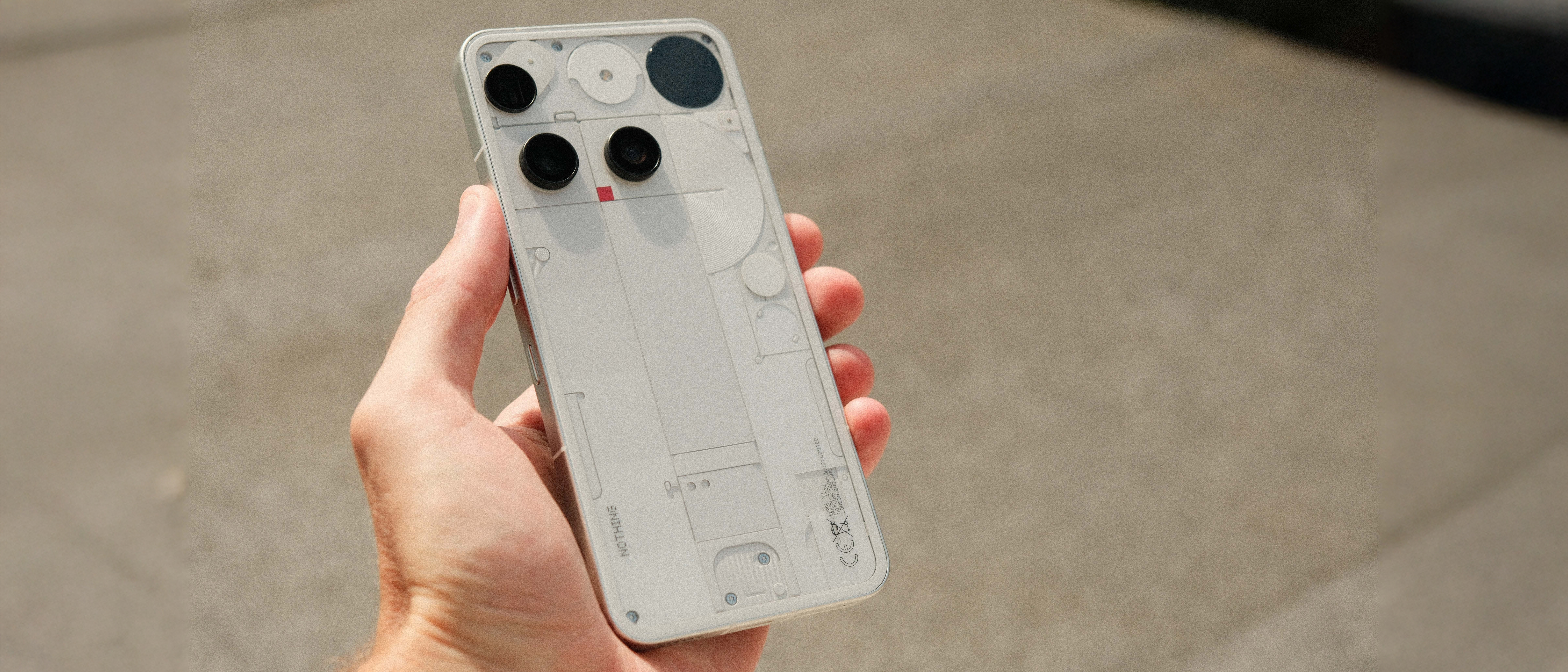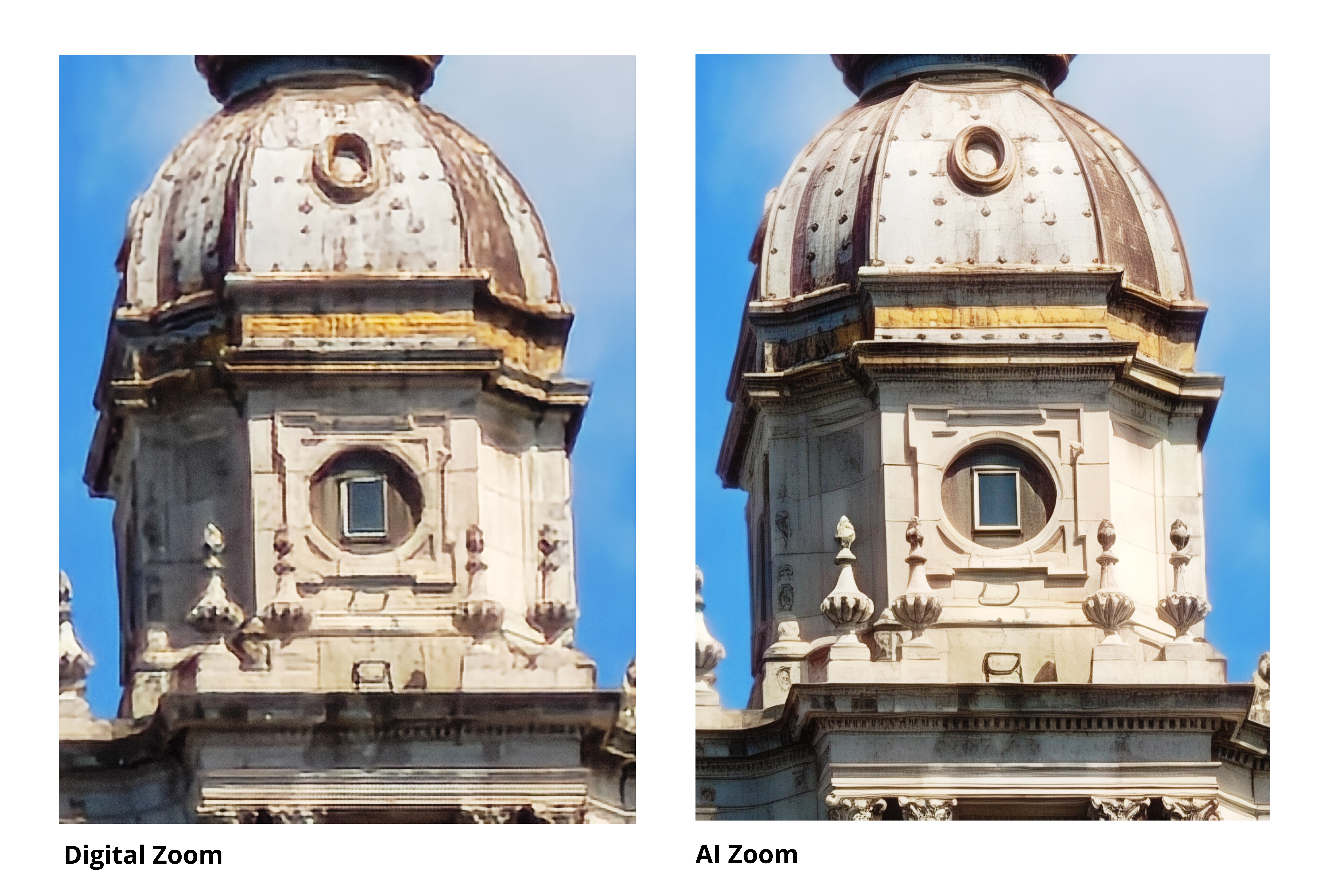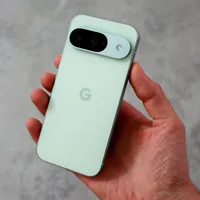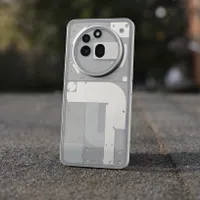Digital Camera World Verdict
The swish design of the Nothing Phone (3) stands out against a sea of samey-looking devices, but the average cameras can’t quite meet the billing of Nothing’s first “flagship camera phone”.
Pros
- +
Unique and quirky design that stands out
- +
Improved triple camera setup
- +
NothingOS is clean and refined
Cons
- -
Camera consistency is an issue
- -
Image quality average compared to similar priced rivals
- -
Glyph matrix a little gimmicky
Why you can trust Digital Camera World
In a sea of samey devices, how can you turn two sheets of glass and some cameras into a unique but still cool-looking phone? This is a question that Nothing has continuously strived to answer with its design-focused devices offering a refreshing alternative to the bevy of options sporting similarly sized screens, processing power, and promises of top-spec imaging.
The Nothing Phone (3) continues this design-led approach, but this time, it’s shedding the budget flagship-alternative approach, with Nothing officially declaring the Phone (3) the brand's first bona fide flagship device. Although ‘flagship’ is somewhat of a vague term. The Phone (3) isn’t intended to compete with the likes of the Samsung Galaxy S25 Ultra, iPhone 16 Pro, or Pixel 9 Pro XL – rather, the more vanilla version of those flagships, i.e., the regular Samsung Galaxy S25, iPhone 16, or Pixel 9.
But with those brands offering decades of experience in the flagship space, can plucky start-up Nothing do enough with its first flagship attempt to give the established players a run for their money?
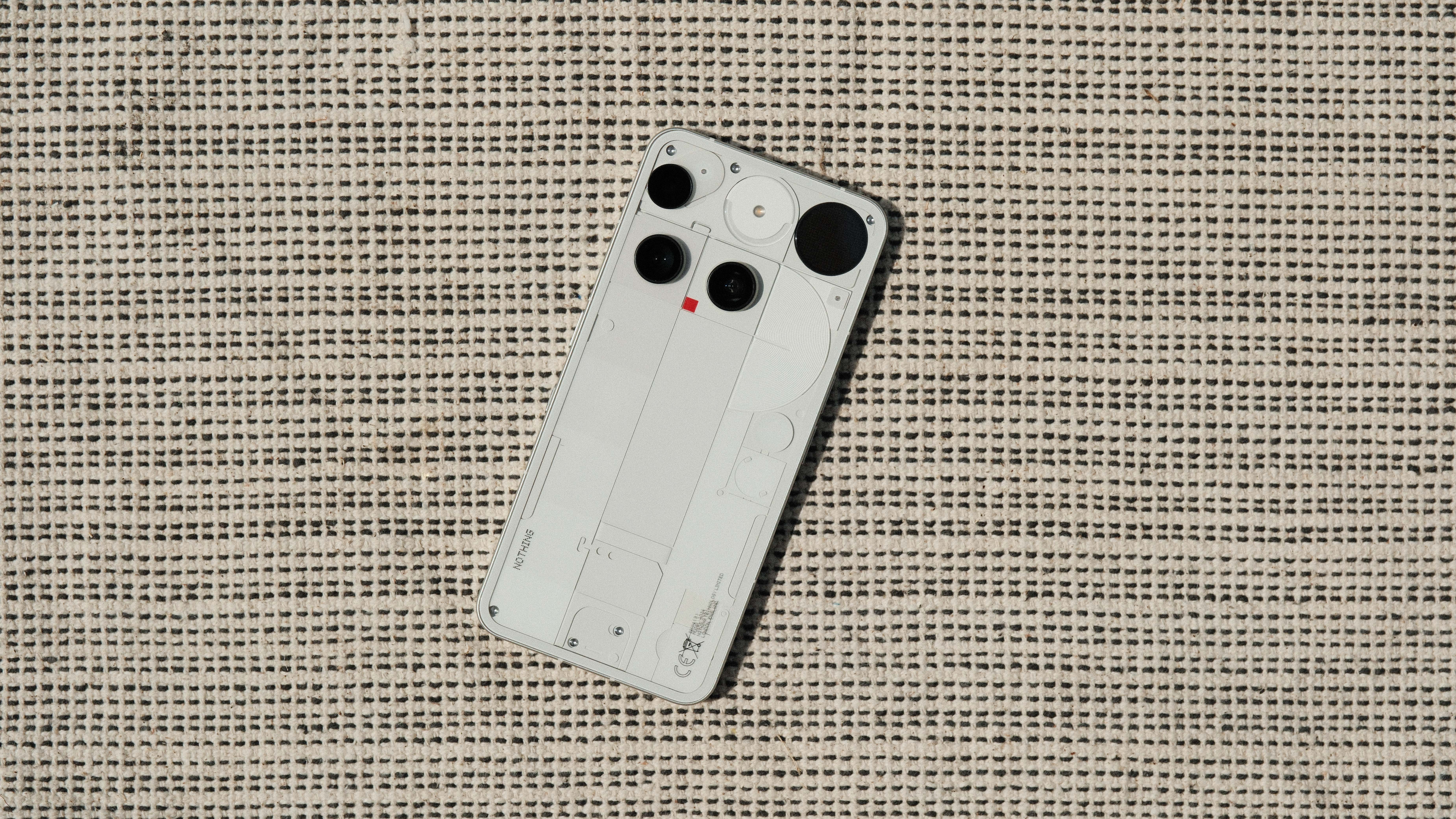
Nothing Phone (3): Specifications
Screen | 6.67in, 1260 x 2800px, 120Hz |
Processor | Qualcomm Snapdragon 8s Gen 4, 8-core, Adreno 825 |
Operating System | Nothing OS 3.5 (based on Android 15) |
Main camera | 50 MP, f/1.7, 24mm, 1/1.3", PDAF, OIS |
Telephoto camera | 50 MP, f/2.7, 1/2.75", PDAF, 3x optical zoom, OIS |
Ultrawide camera | 50 MP, f/2.2, 114˚, 1/2.76" |
Front facing camera | 50 MP, f/2.2, (wide), 1/2.76" |
Video | 4K30/60fps, 1080p30/60fps |
Battery & charging | 5,150mAh, 65W wired, 15W wireless |
Weight | 218 g / 7.69 oz |
Size | 160.6 x 75.6 x 9 mm / 6.32 x 2.98 x 0.35 in |
Nothing Phone (3): Price
The Nothing Phone (3) launched in July and is one of the decreasing number of devices to get a true global launch – which includes the US. At $799 / £799 for the standard 12GB+256GB model or $899 / £899 for the 16GB+512GB version, it's a price that loosely aligns with the Pixel 9 and iPhone 16 (although the Phone (3) gives you a telephoto camera) and slightly undercuts the Galaxy S25 with it’s triple camera setup, albeit some at lower resolutions than the Phone (3). But for the design, quality, power, and cameras, I think it is a very fair price to pay.
Nothing Phone (3): Design & Handling
From its inception, Nothing has built its brand around standout industrial design, with hallmarks like the transparent rear panels and glyph lighting becoming instantly recognisable staples.
It’s therefore somewhat surprising that Nothing has decided to switch out the glyph lighting on the Phone (3) for the ‘Glyph Matrix’. This is a small LED dot matrix screen in the top right-hand corner on the rear of the device that functions mostly in the same way as the glyph lights – alerting you to notifications, reminders, timers, etc, when your phone is face down – but with far more contextual information. However, Nothing has added a little more functionality with what it is calling Glyph Toys – interactive tools and mini games like rock-paper-scissors or spin the bottle.
With the exception of the ‘Glyph Mirror’, which displays a small preview of the rear cameras, so you could line up a selfie or vlog, I found the current crop of toys somewhat gimmicky and not particularly useful beyond a few minutes of entertainment. The example Nothing used on stage during the announcement was playing spin the bottle to decide who pays the bill in a restaurant, which is madness.
The best camera deals, reviews, product advice, and unmissable photography news, direct to your inbox!
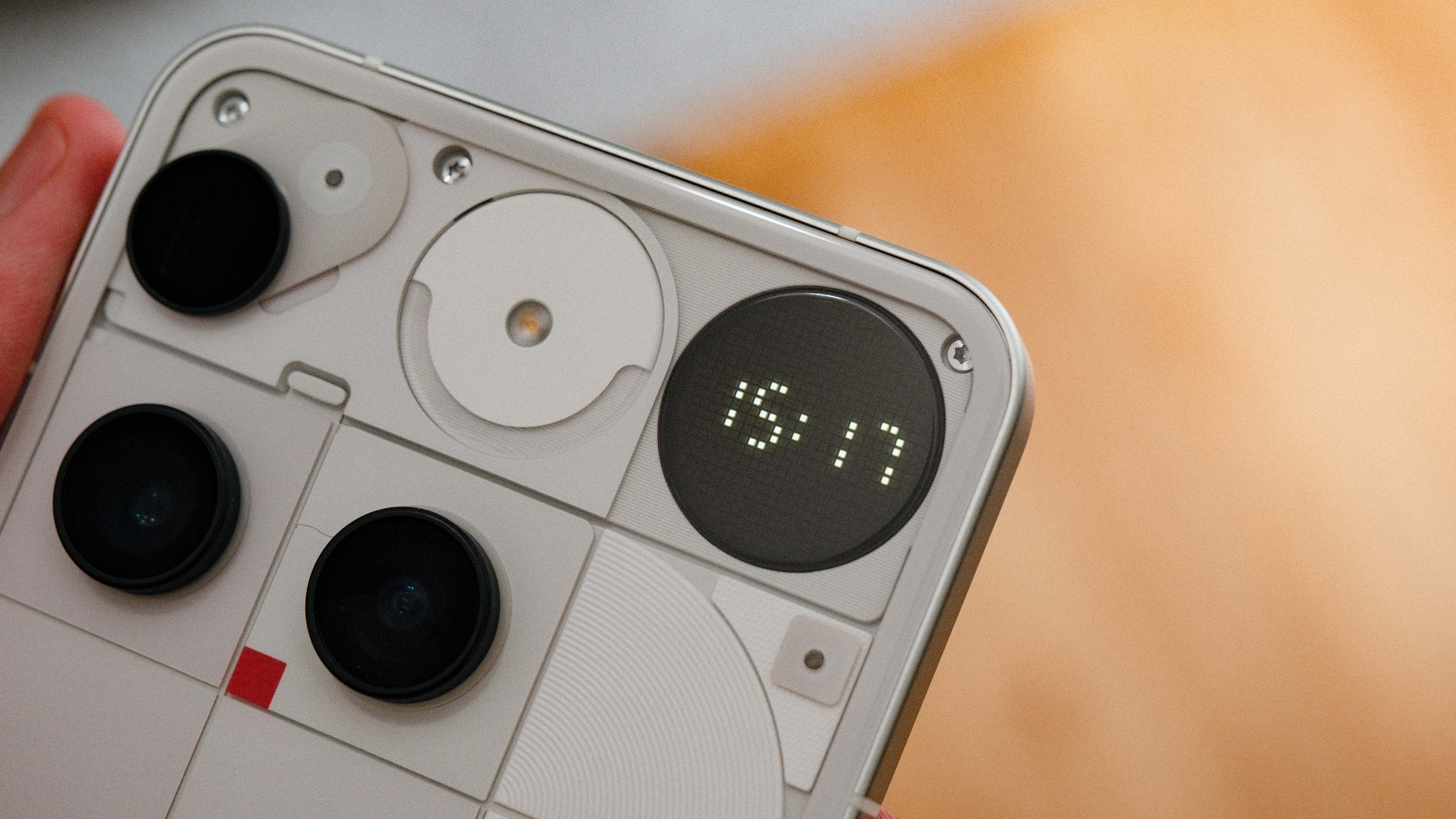
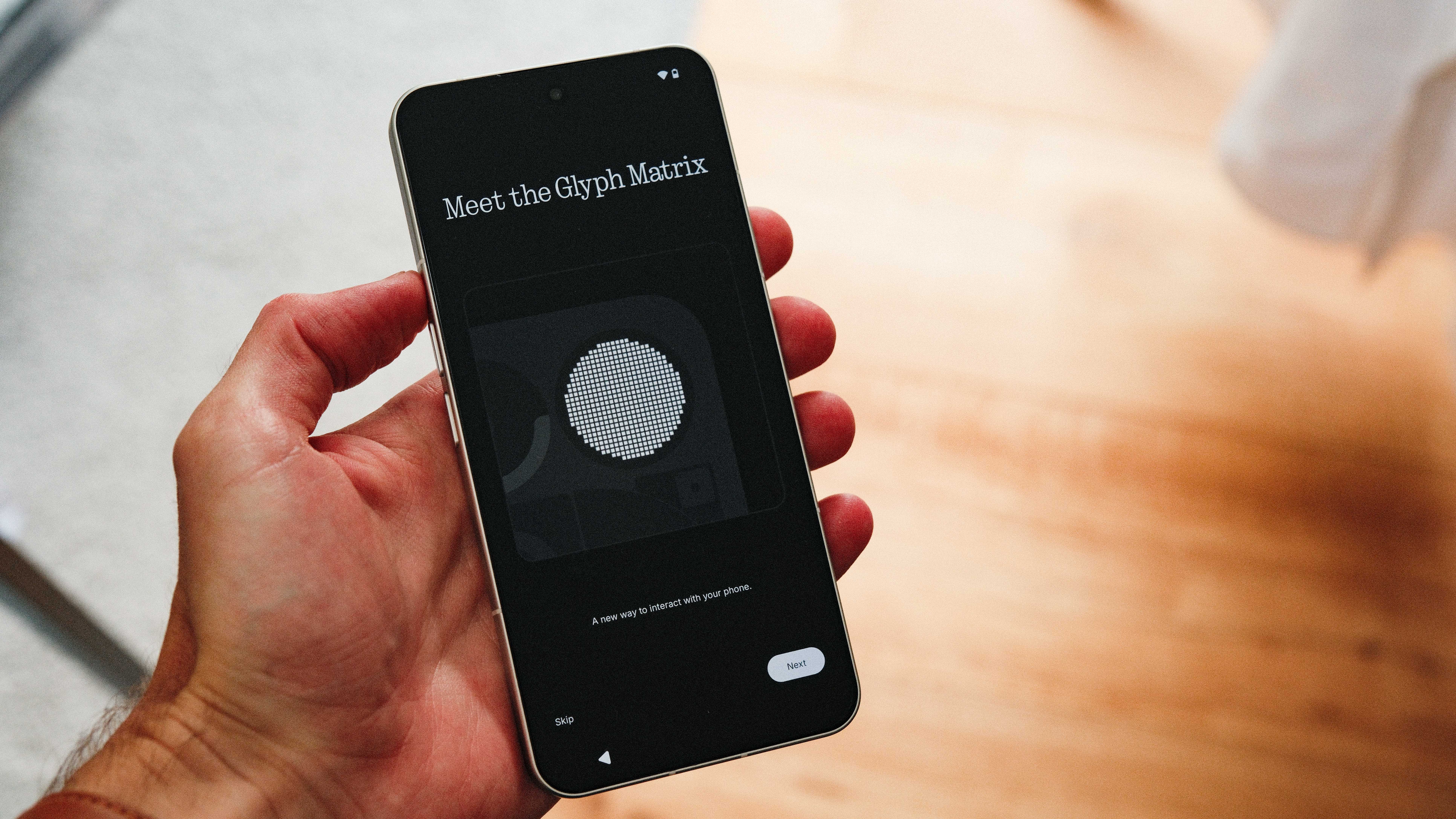
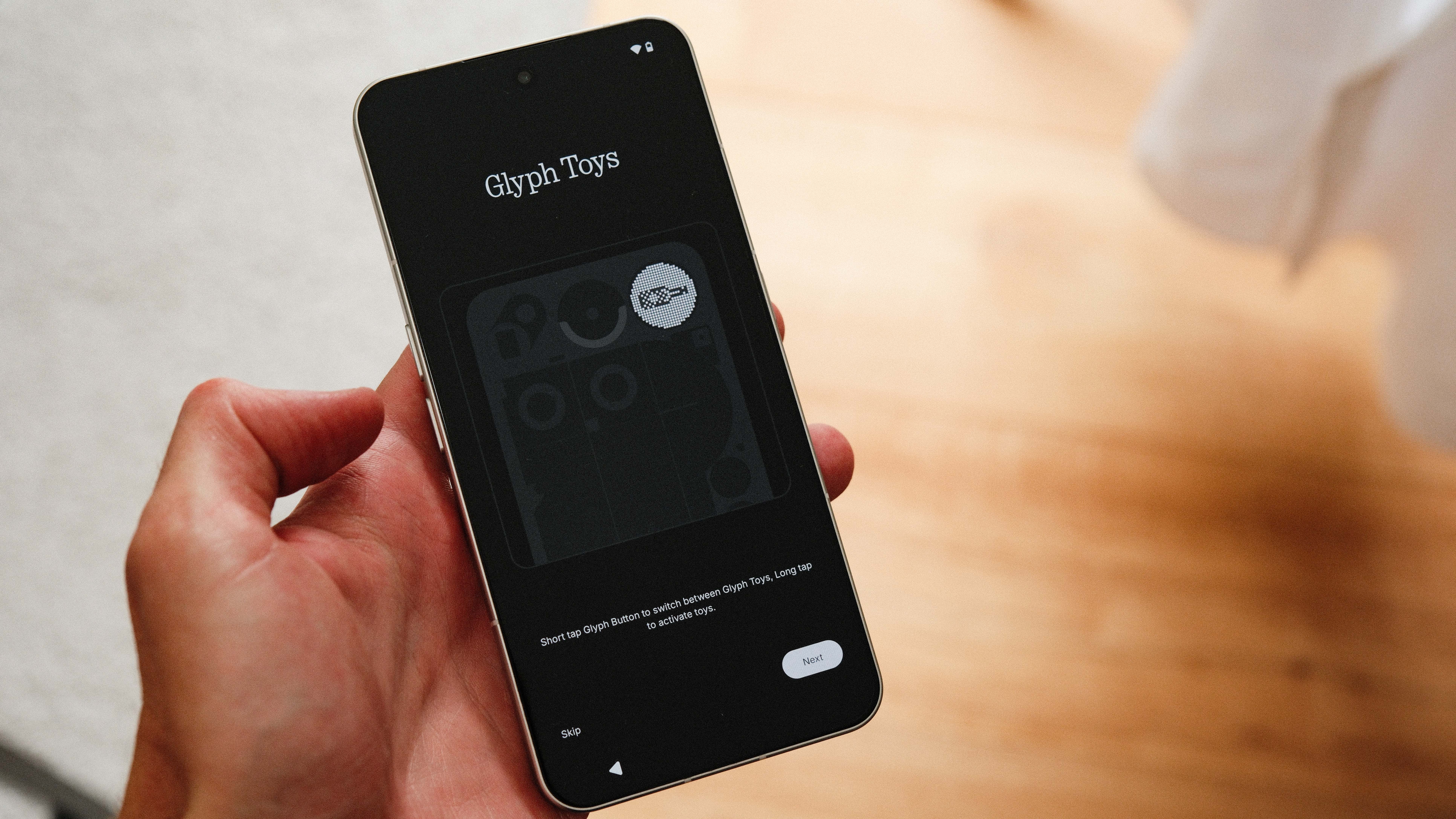
However, I do think the Glyph Matrix looks very cool, is far more useful than the glyph lights at providing contextual information to your alerts, and it certainly sets the Phone (3) apart from other handsets. It’s early days for the Phone (3) and the Glyph Matrix, and with the development of new tools open to the community, I’m definitely excited for the potential for more useful tools to be added in the future.
While the glyph lighting might have changed, the rear panel on the Phone (3) is again transparent with revealing some of the phone's internal assembly underneath. It's a design that, even after several different iterations, still looks fresh and cool – and I found myself always putting the Phone (3) screen down on my desk, which I don’t do with other phones.
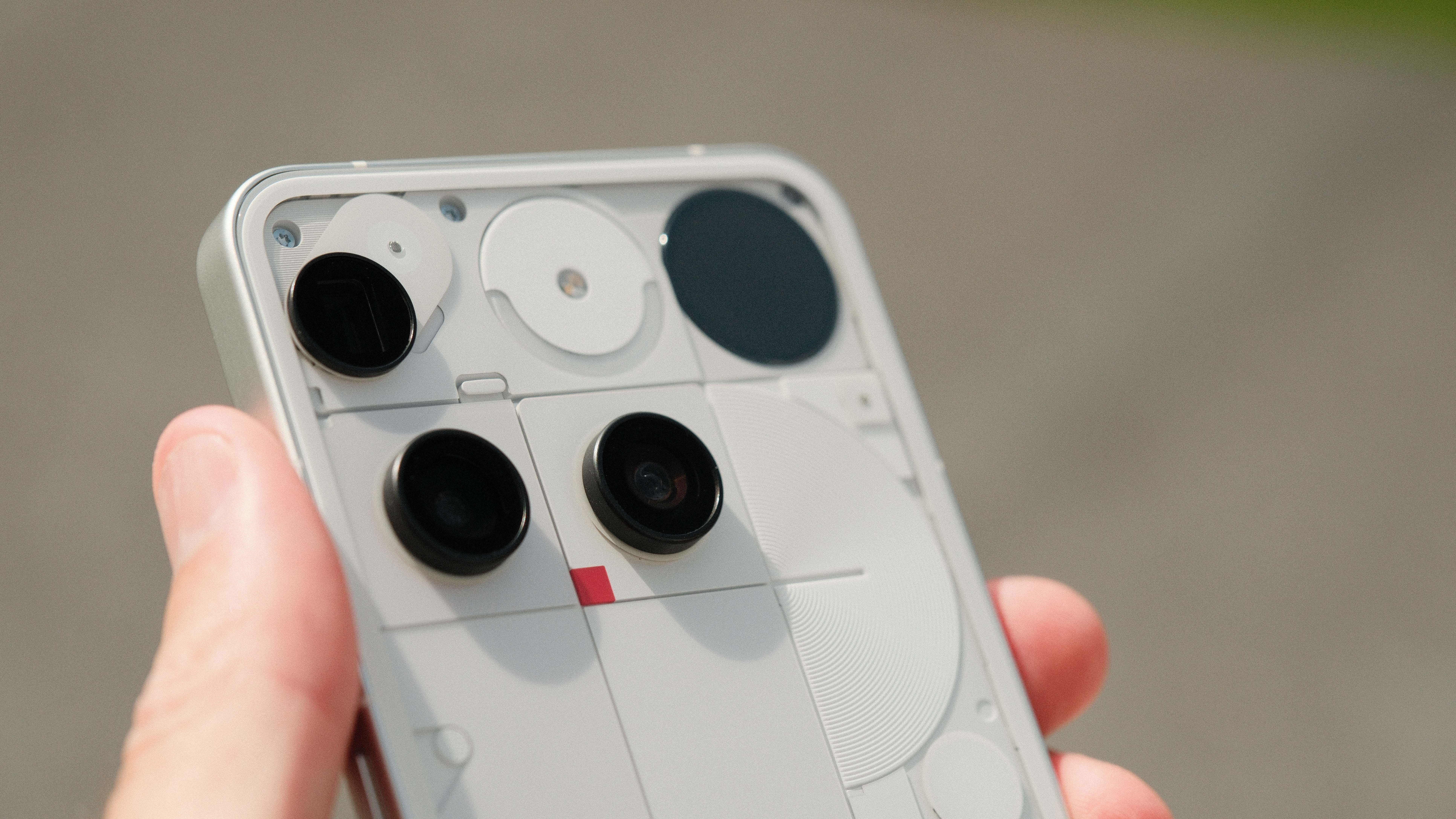
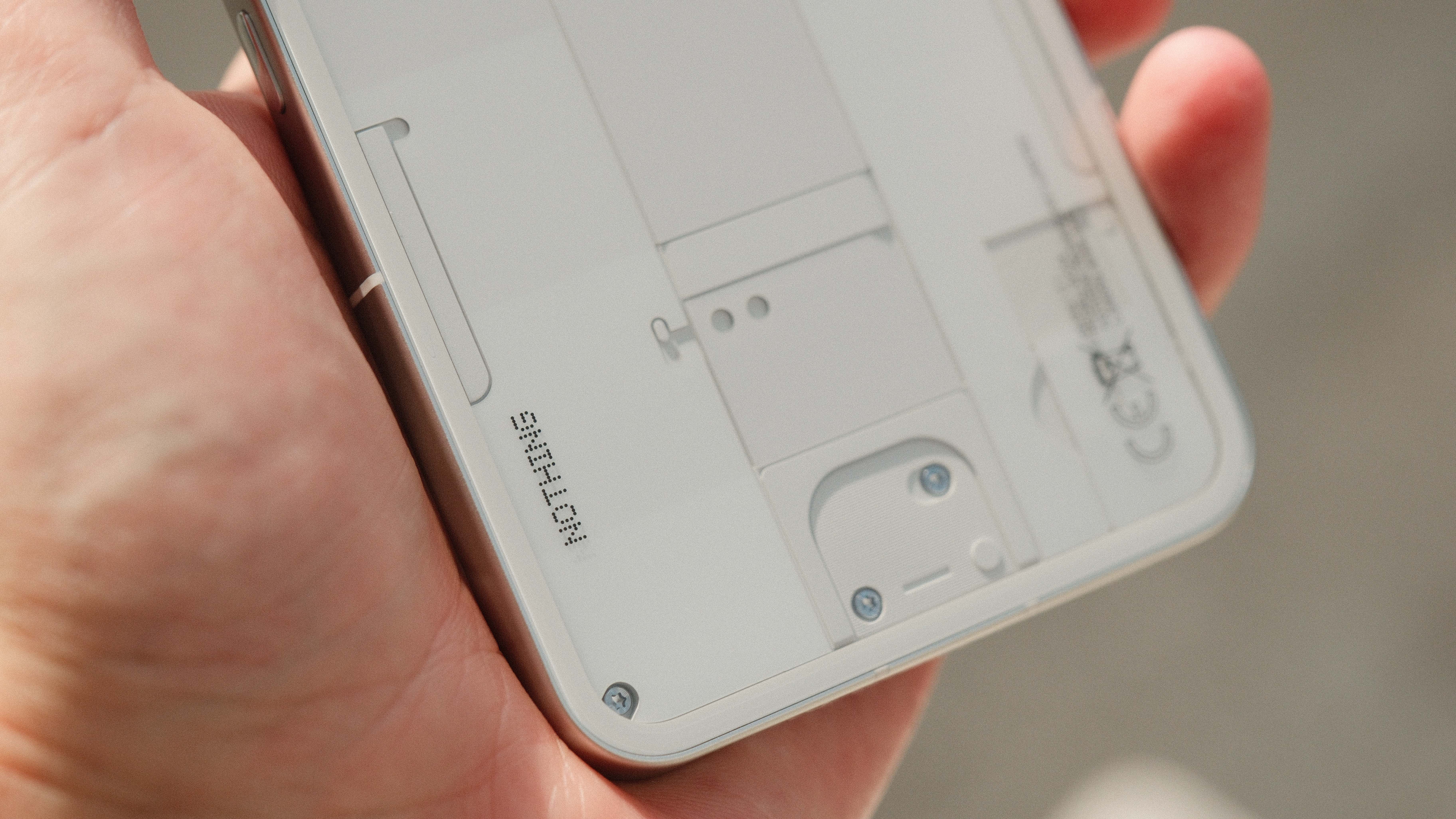
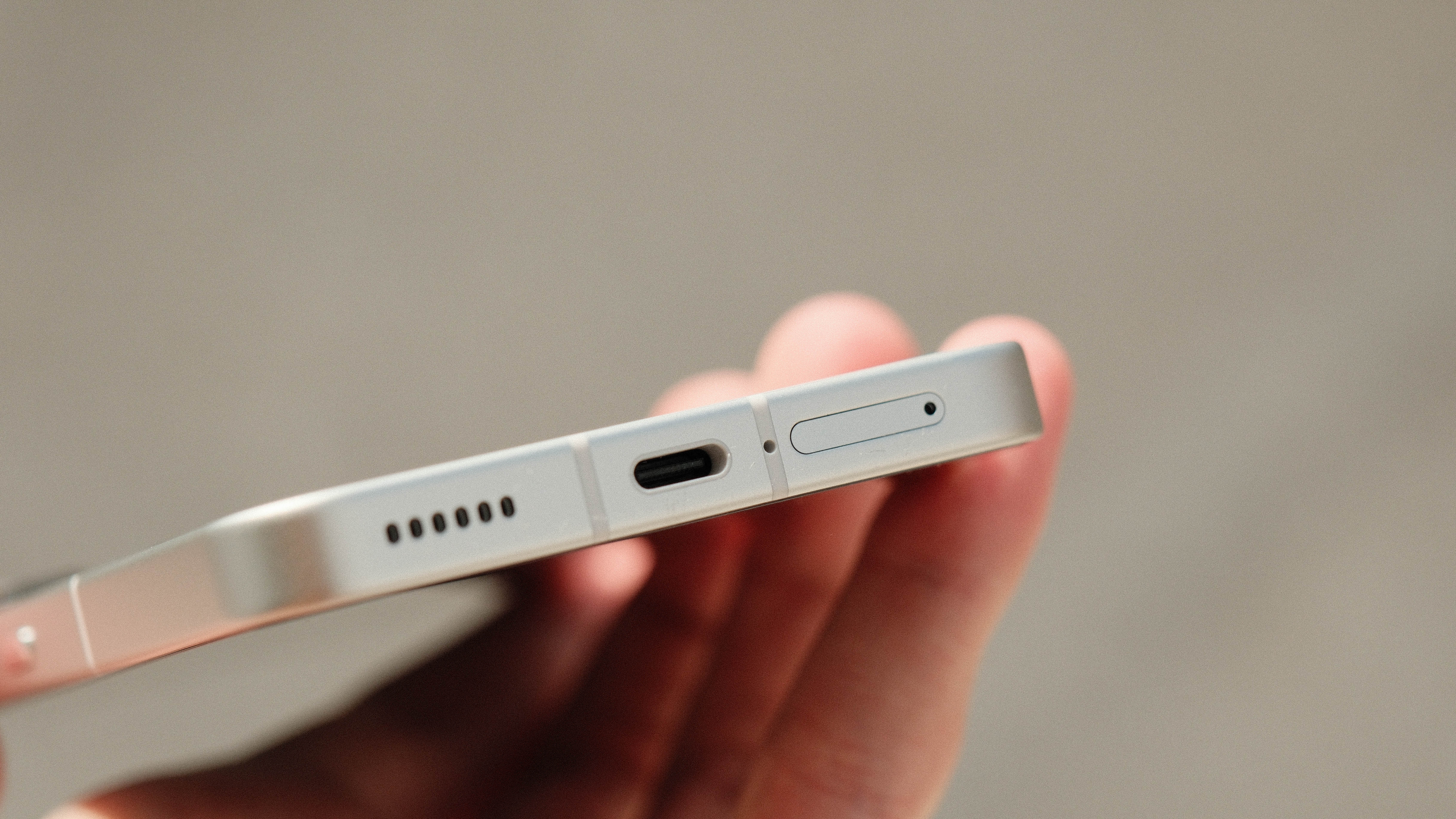
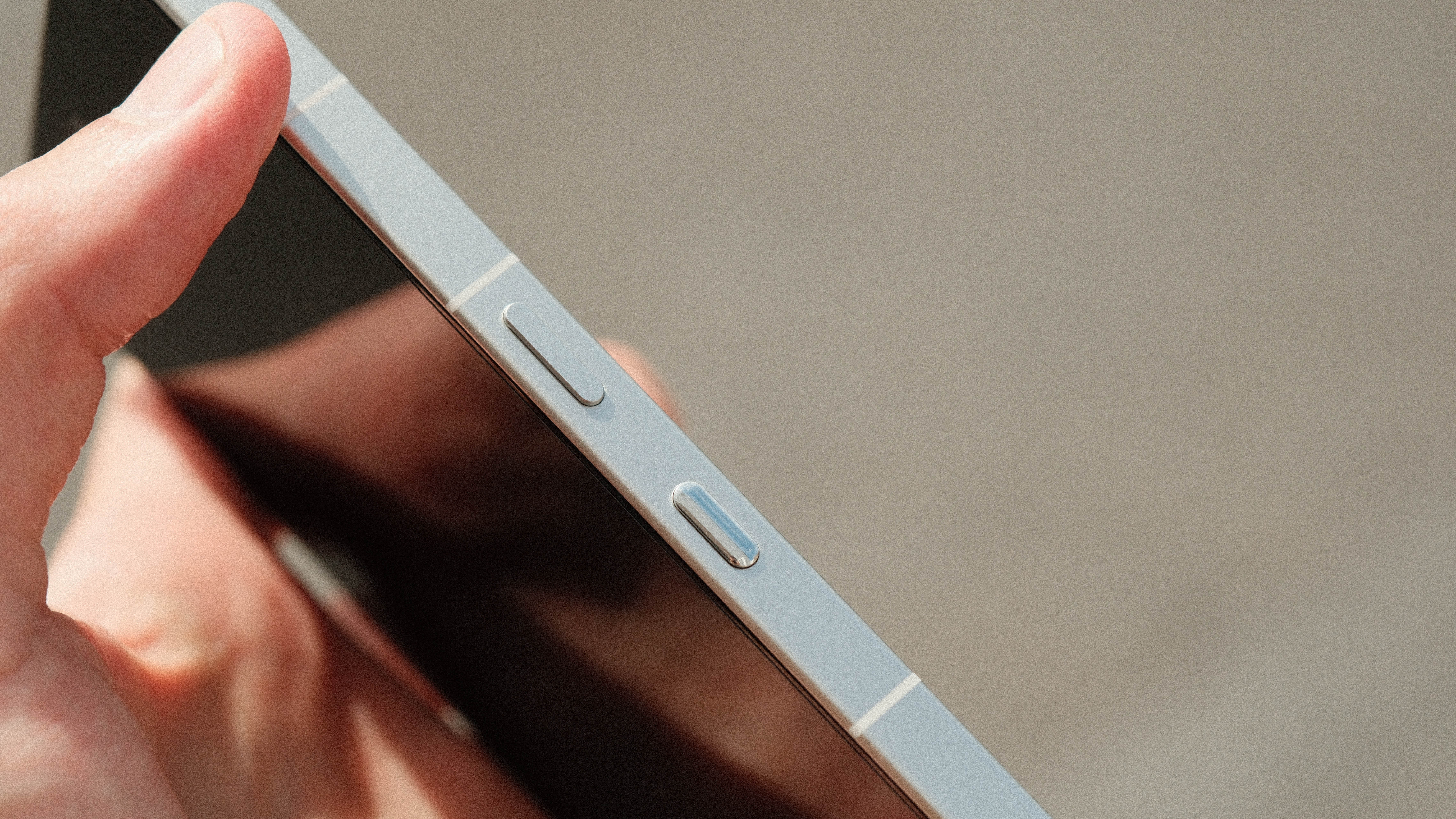

The phone comes in black or white – although these are more light grey and dark grey – both colors are nice, although I think the pop of the lenses and Glyph Matrix on the white version wins out for me. Around the Phone (3)’s aluminum edge is the usual array of power and volume buttons, as well as a button to access the Essential Space (more on that later).
Like to the Phone (3a), Nothing has gone with an asymmetrical camera layout for the Phone (3), although it ditches the camera island, with each lens fitting in its own separate little protrusion from the phone's rear, similar to recent Galaxies. I don’t mind the lopsided design, it’s unique, and not having a large camera island does give more space to wrap my fingers around the rear of the device, and gives the appearance of a thinner phone. There is also an LED flash on the back, as well as a red LED tally light for recording video – a really nice little touch.
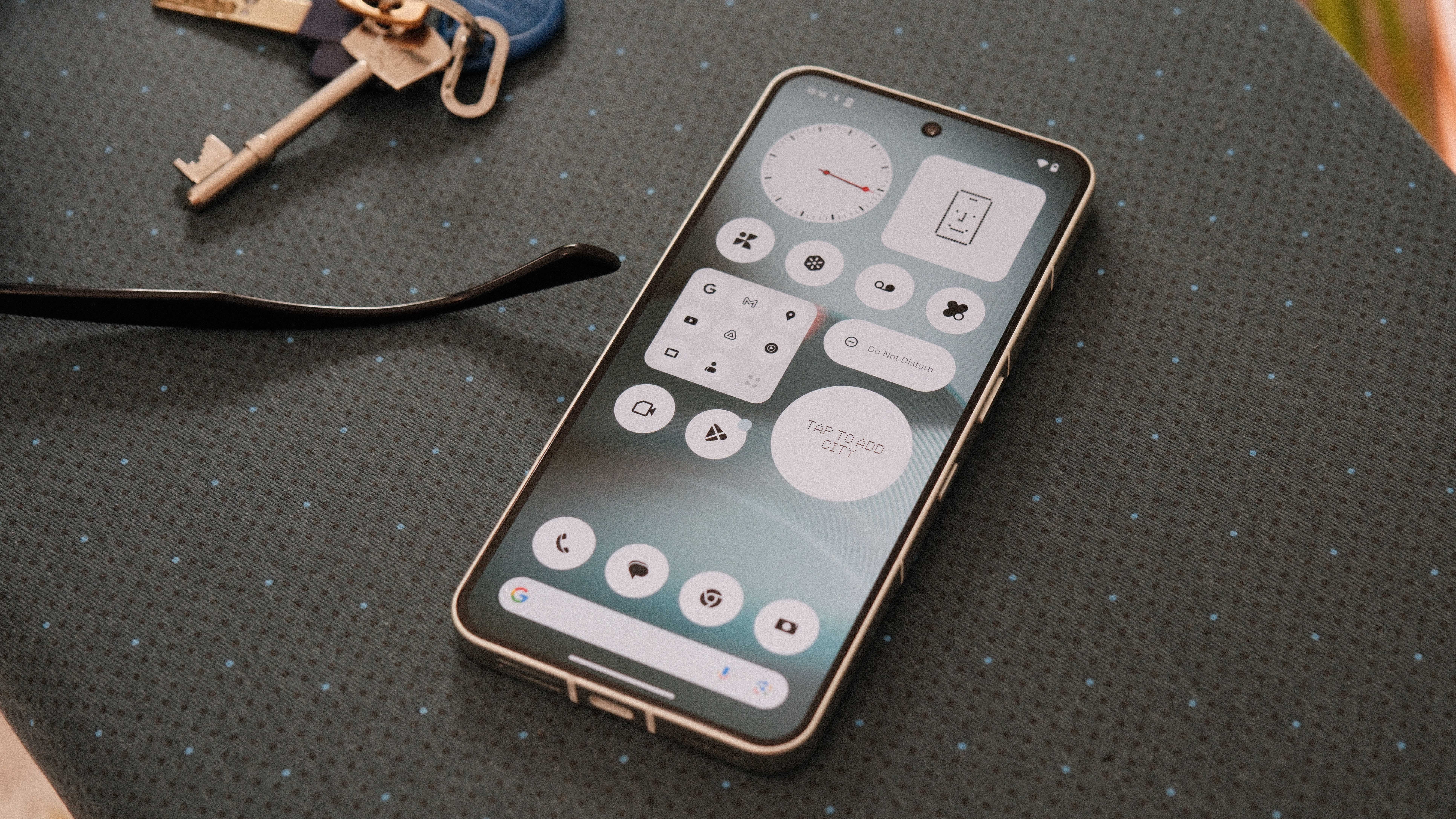
Flip the phone over to the screen, and the Phone (3) is sporting a 6.67-inch AMOLED flat panel with thin bezels that looks not dissimilar to most other phones out there right now. The display isn’t the absolute best I’ve used, but for the price, it is really very nice – sharp, with good colors – I’d be confident reviewing images on this screen that they are accurate.
Overall, I really enjoy the design of the Phone (3), it is really like nothing out there right now from other brands, and I think it hits the right balance of quirk and sophistication – although I am sure there are plenty who would disagree – if uniqueness appeeals to you then the Phone (3) might scratch that itch.
Nothing Phone (3): Camera Performance
Main camera
50 MP, f/1.7, 24mm, 1/1.3", PDAF, OIS
Telephoto camera
50 MP, f/2.7, 1/2.75", PDAF, 3x optical zoom, OIS
Ultrawide camera
50 MP, f/2.2, 114˚, 1/2.76"
Since this was billed as Nothing’s first flagship camera phone, and it debuts a trio of new 50MP sensors, my expectations were for Nothing to challenge the likes Google, Samsung, and OnePlus – all of whom offer excellent cameras for around the same price. And while the Phone (3) is definitely fit to compete, it won’t be leaving with any silverware.


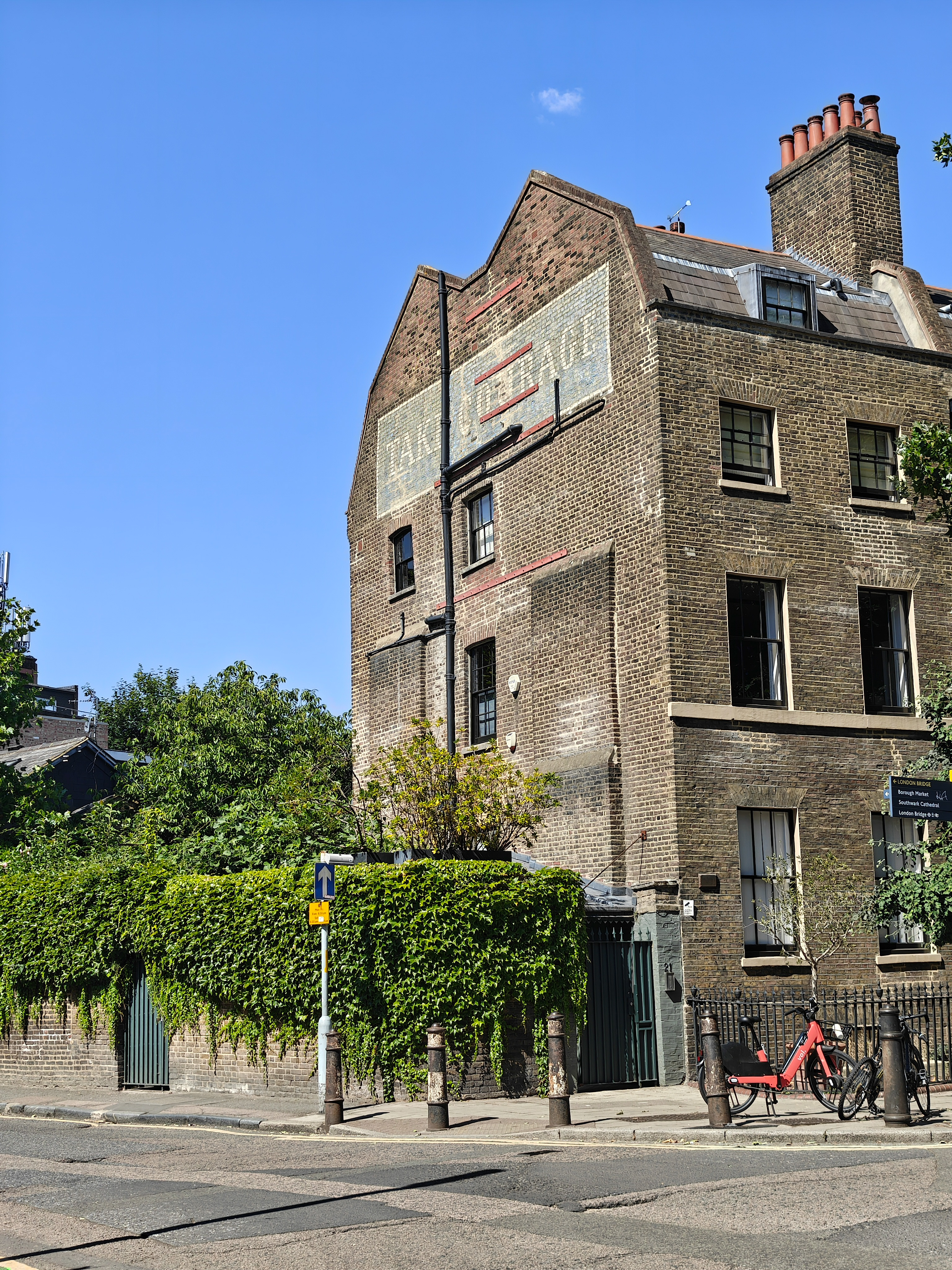



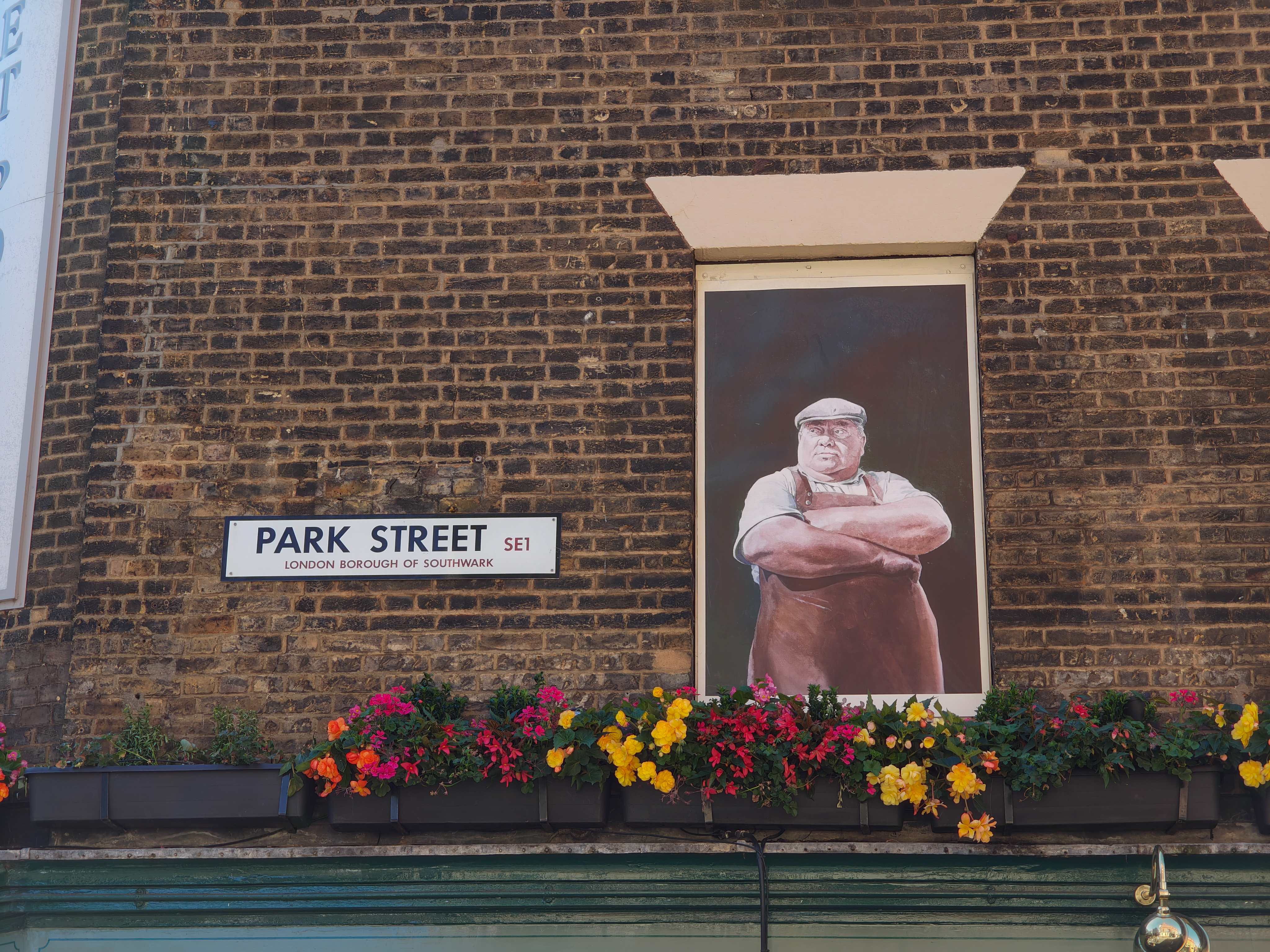


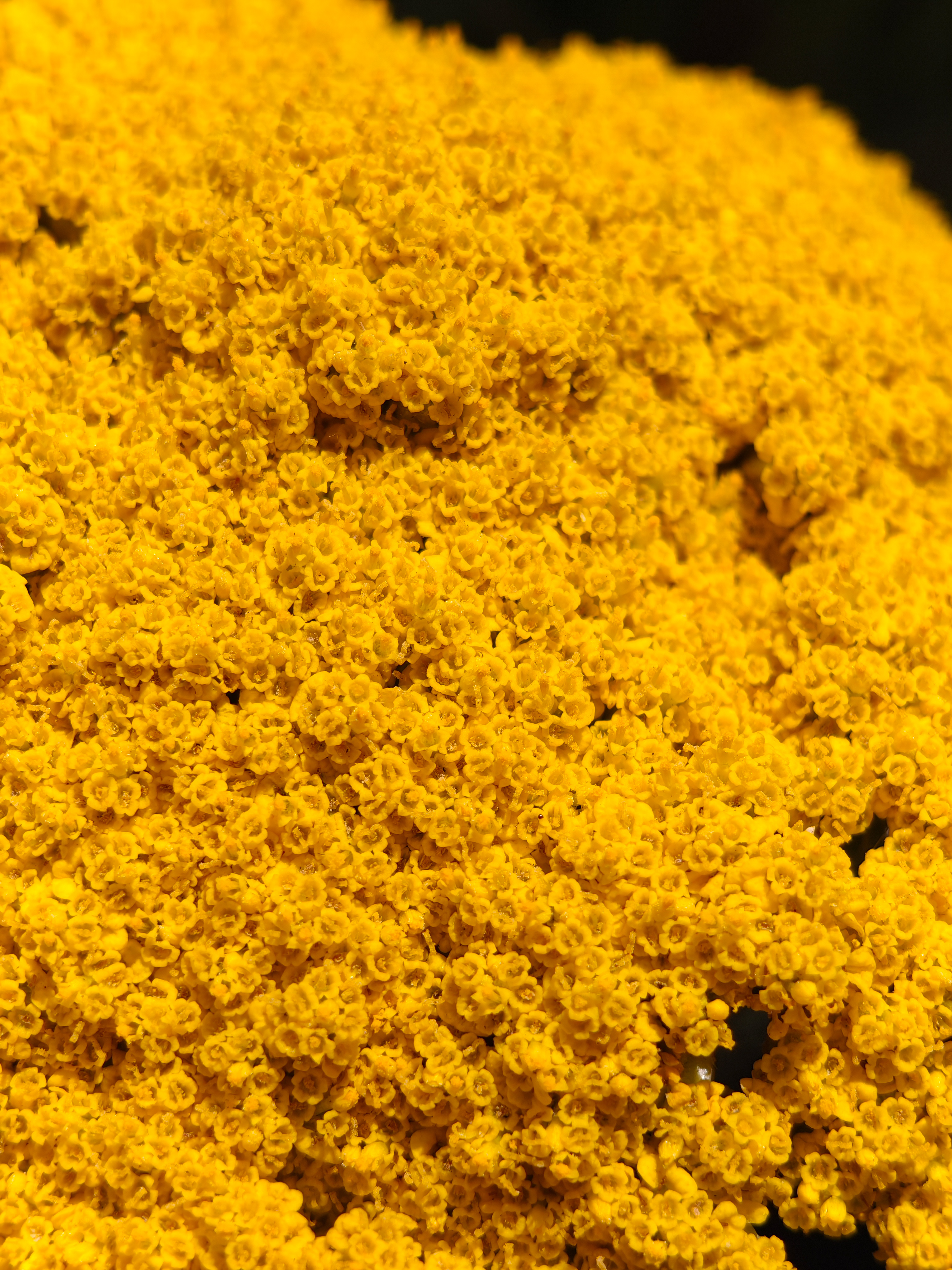



The main camera is the star of the show, with solid images that are sharp, even with using the 2x crop. The main sensor also shows the most consistency between images, and in different lighting, with it performing well in both outdoor and indoor settings. In low-light scenarios, this is definitely the lens to reach for, as it performed the best in my testing, but images just aren’t as clean as rivals and their, perhaps, more finely tuned algorithms.
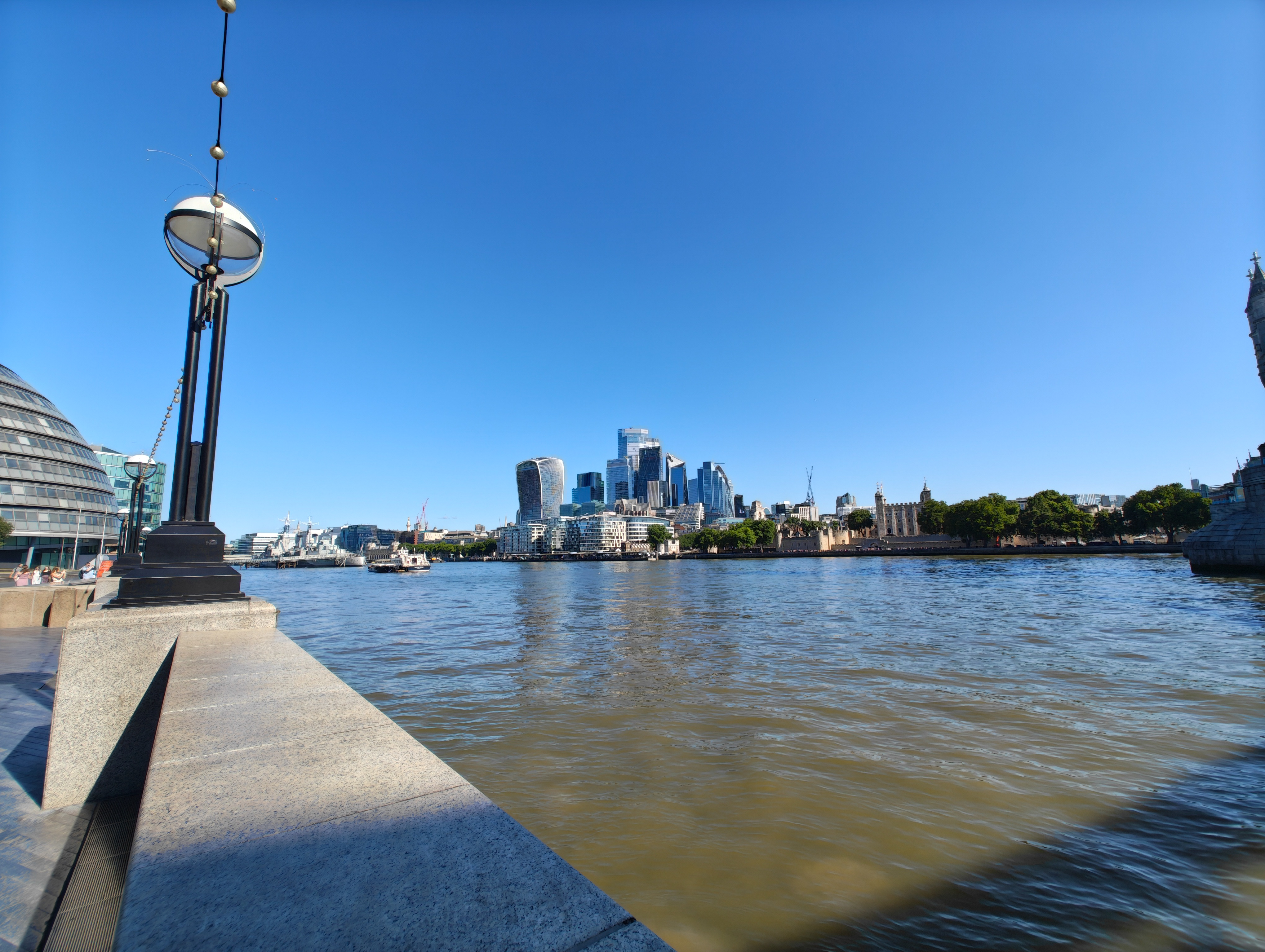
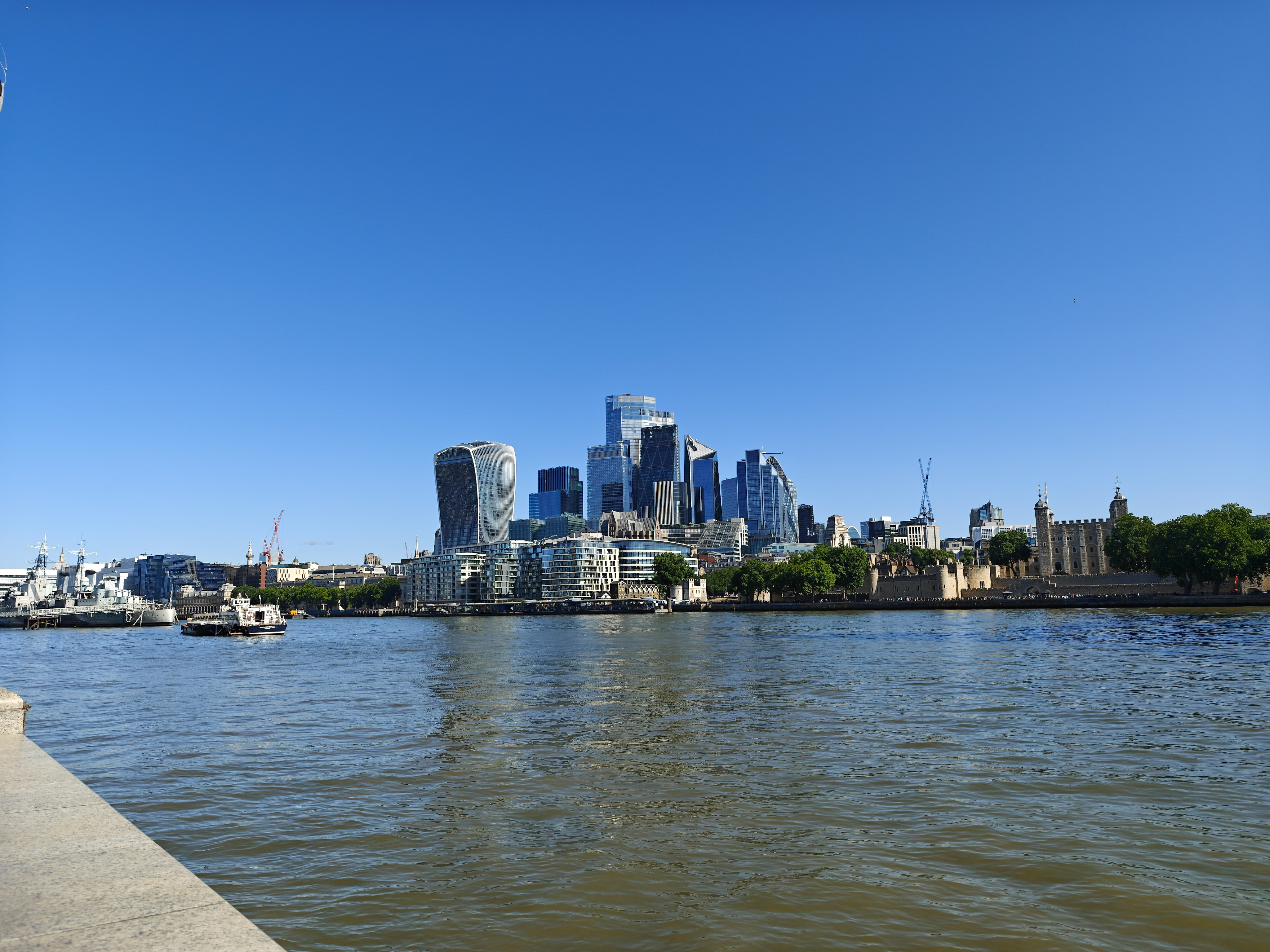
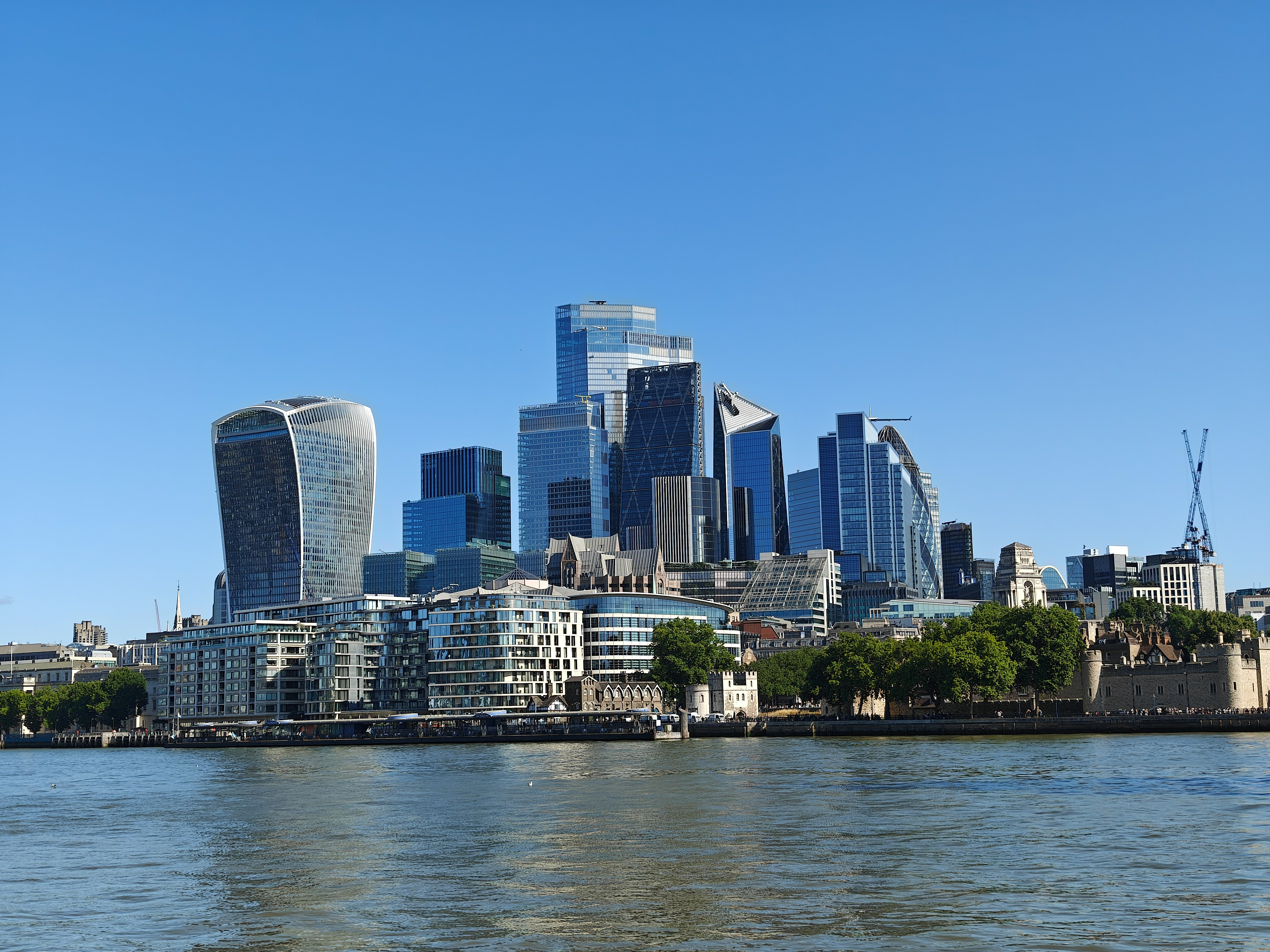
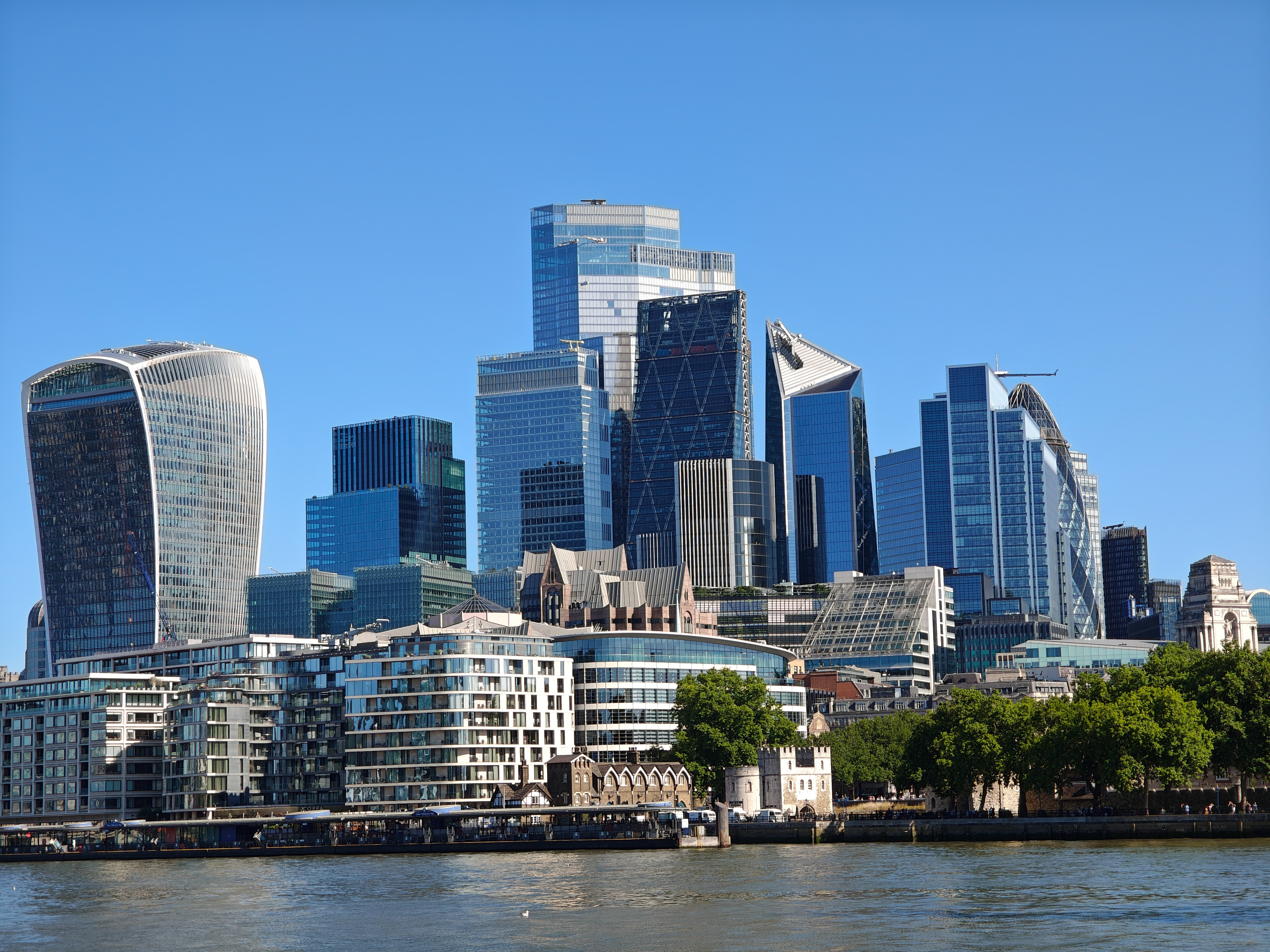

The telephoto camera was more of a mixed bag. When the camera was good, it was just as good as the main sensor, but unfortunately, this was not consistent enough. I found that in my testing, sometimes this camera would read the colors differently from the main camera – and quite skewed from real life. There was also an occasional tendency to add an almost dream-like haze to the whites of some images. Although both of these quirks could presumably be fixed with some firmware down the line.
The Phone (3), like nearly all phones now, offers its own take on AI-assisted super zoom – with the Phone (3) going up to a maximum of 60x zoom. The results are a clear and obvious improvement on just digital zoom alone, and very impressive for a startup that has only existed for a few years – but super-zoom images can’t quite compete with Google or Samsung, and are not in the same league right now as leaders in the field – Oppo and Vivo.
Finally, rounding out the cameras, the ultrawide camera is fine; it's not the best ultrawide camera you’ll find on a phone, but it offers decent performance in daylight, although again struggled with matching the color balance of the other sensors, and even though it's a 50MP sensor, there is very little quality once you start cropping in.
One aspect of the Nothing Phone (3)'s camera that was a bit of a saving grace for inconsistency was the filters built into the camera. There are several filters for different looks, from dreamy portraits to faking color film – or you make your own LUTs (or download others') and load them onto the Phone (3).
But I especially became obsessed with the standard black-and-white filter. It gives an incredible street photography look, and I couldn't stop myself using it (seriously, this was nearly an exclusive b&w review). As someone who swapped much of my photographic kit to Fujifilm due to its film simulations/recipes, giving more control over the look of images directly on my phone is a big win here, and one I hope other brands take note of!
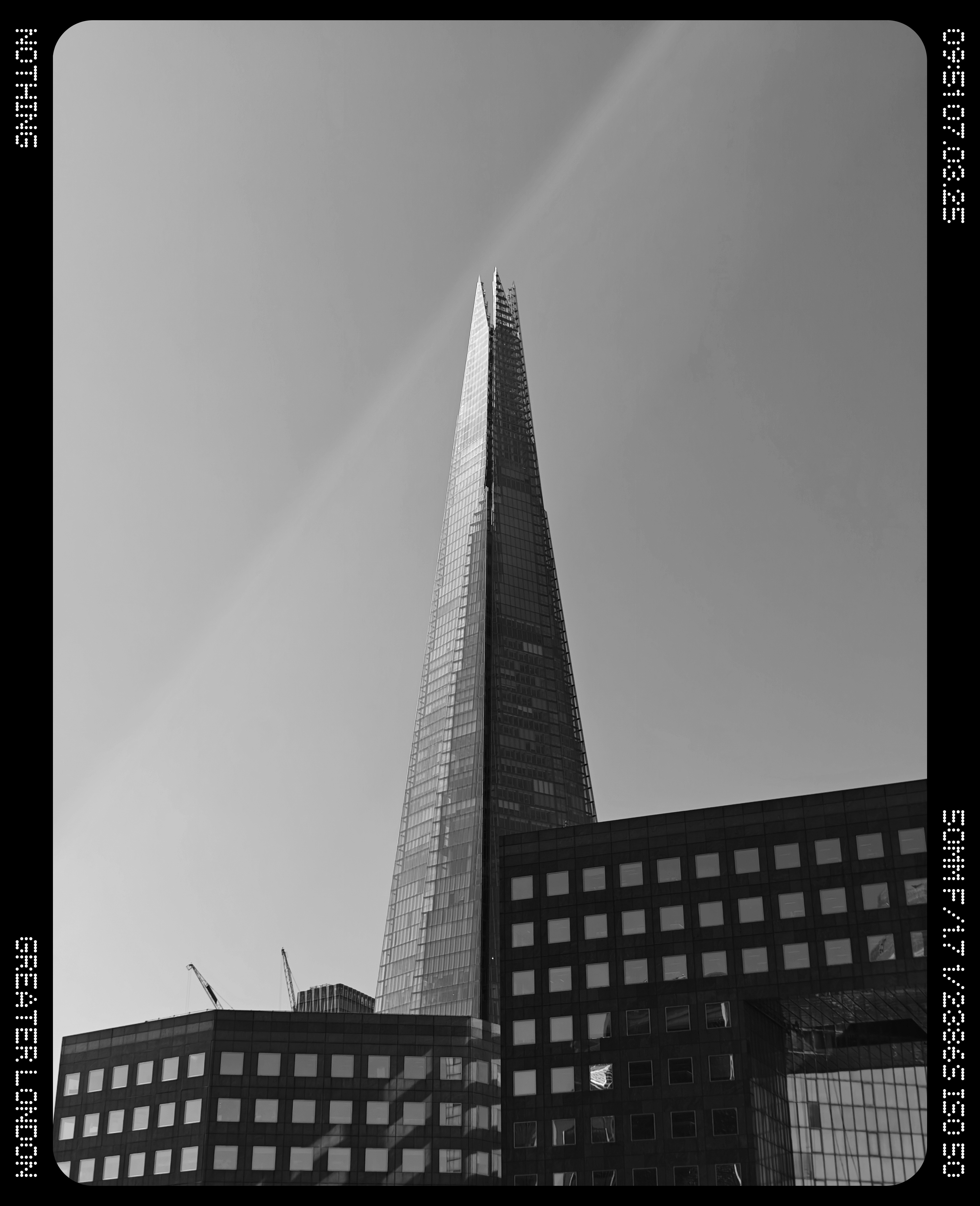
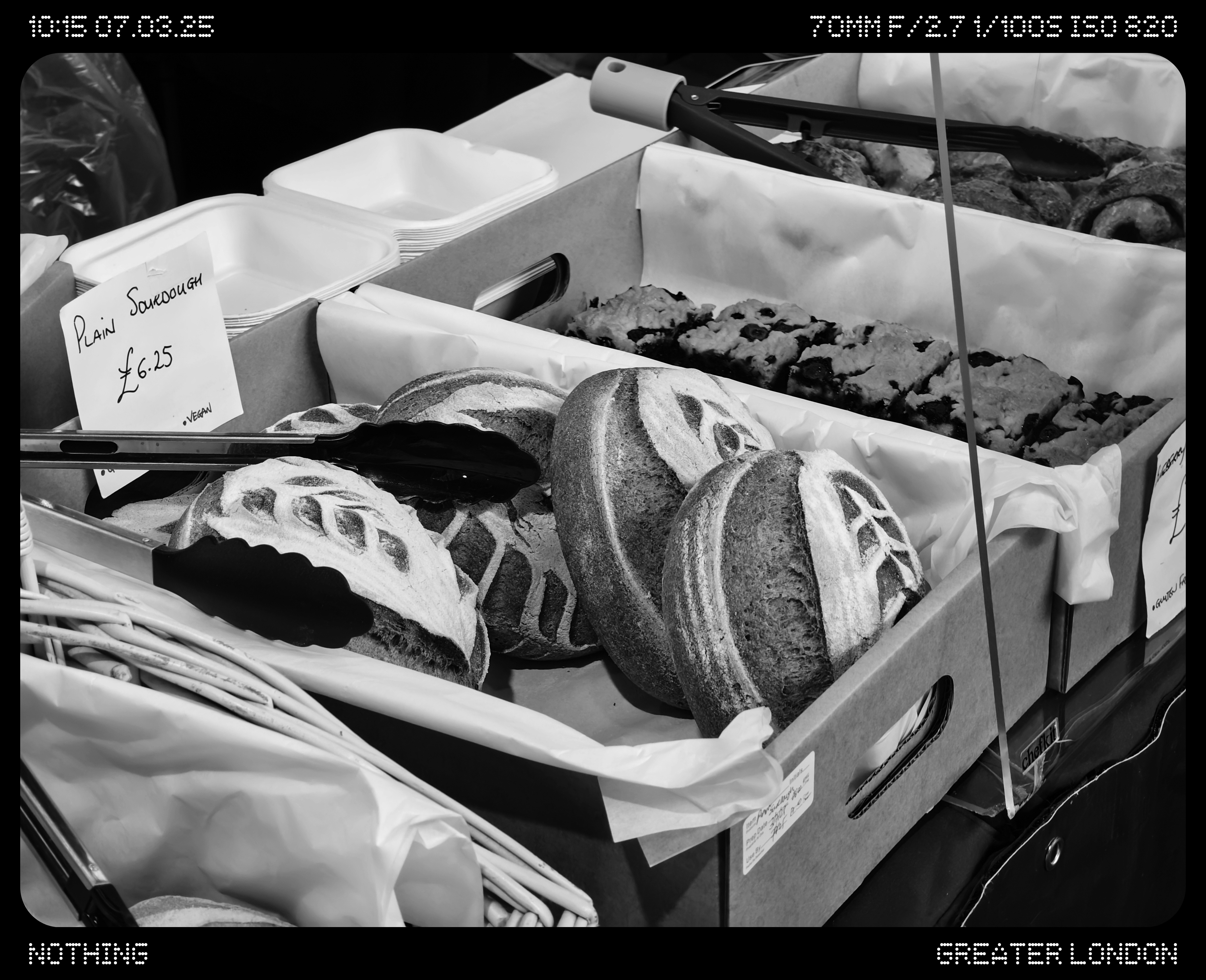
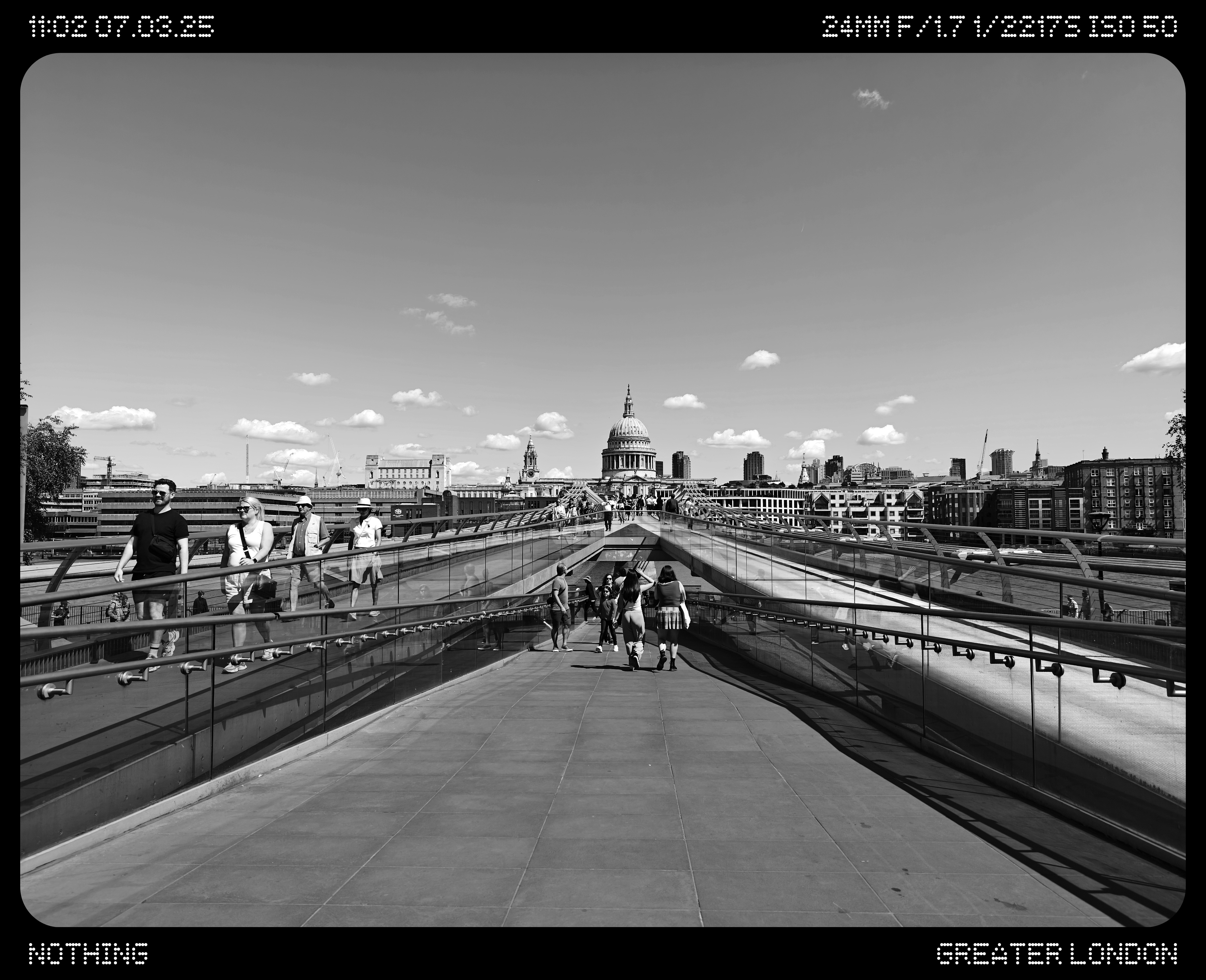
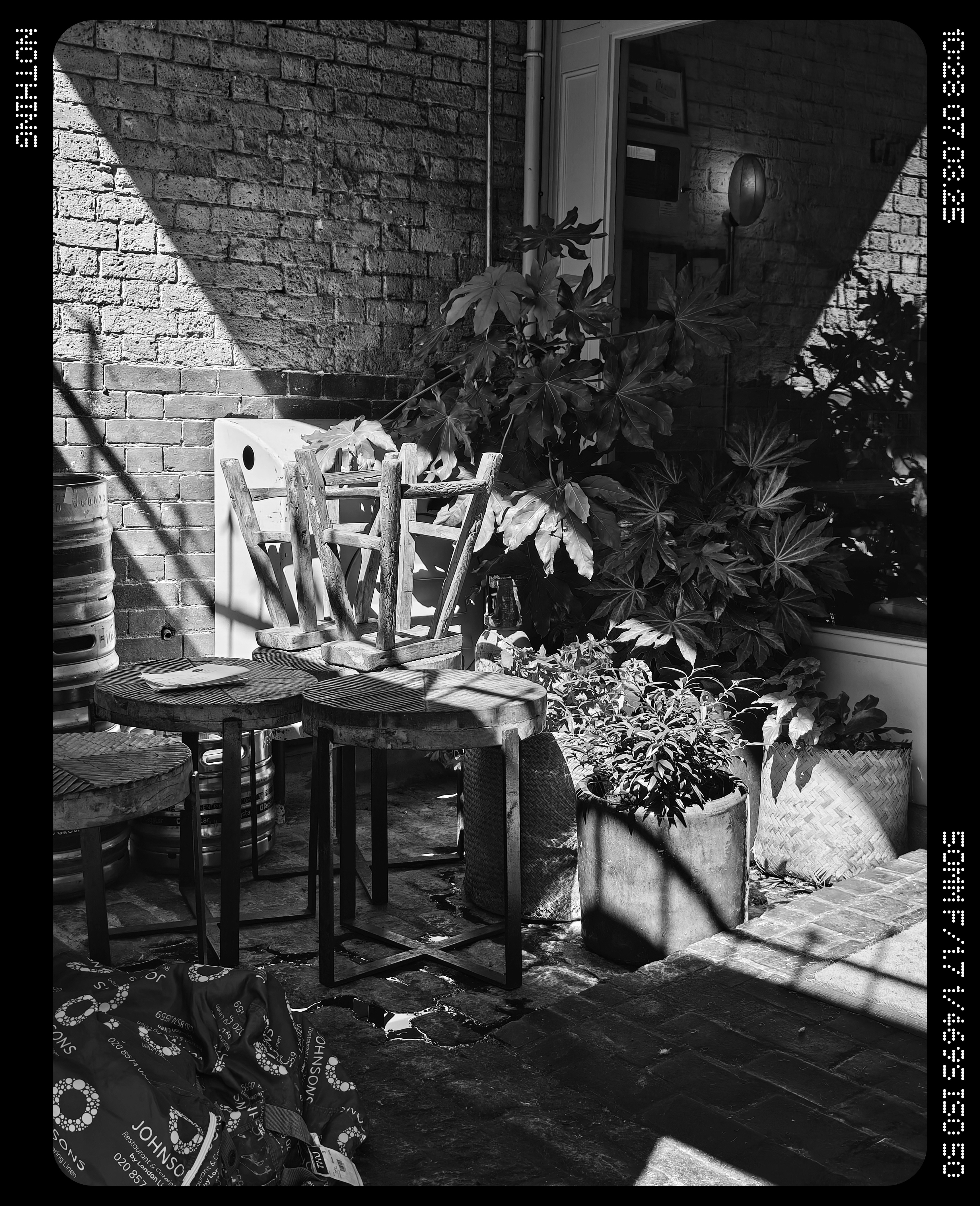
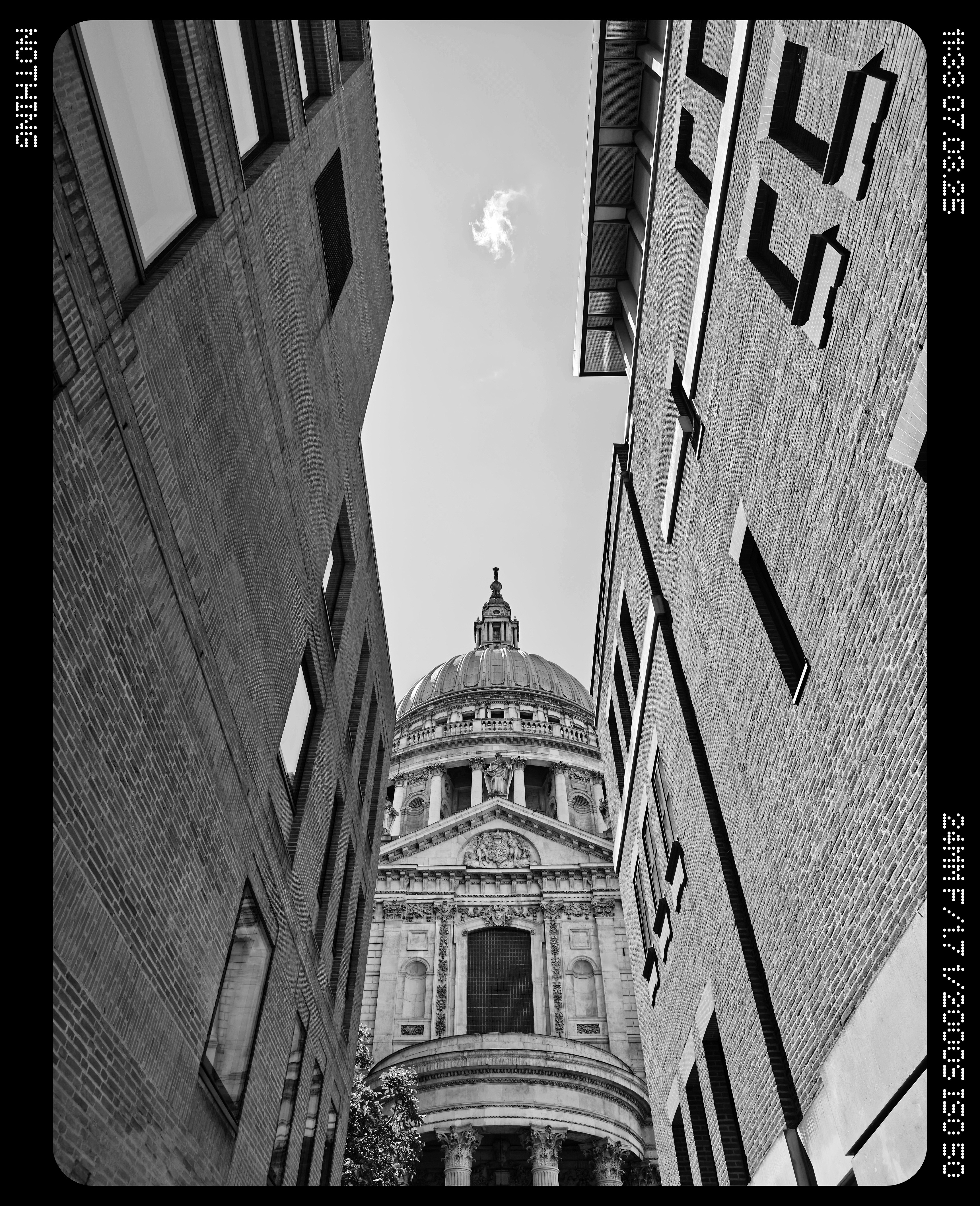
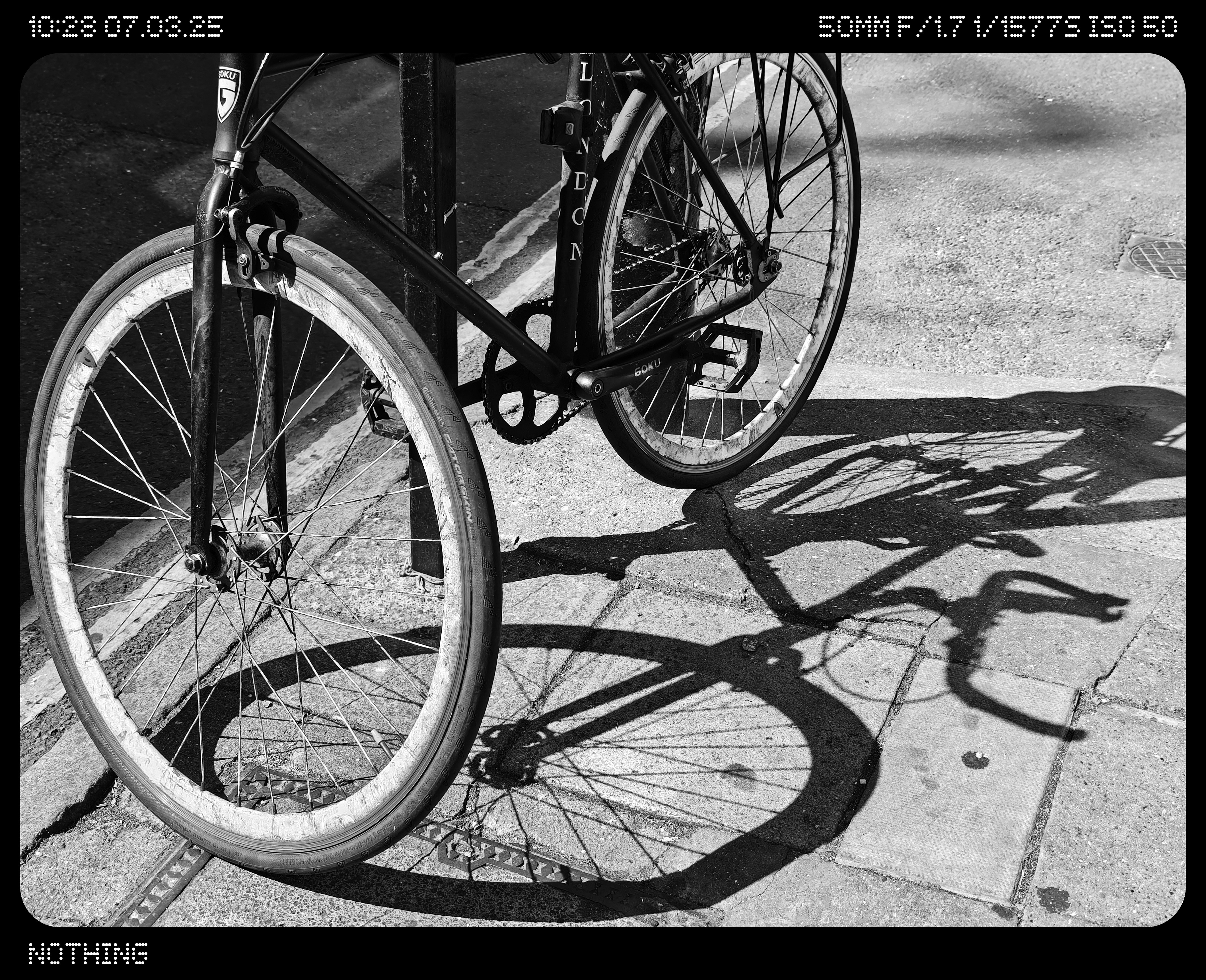
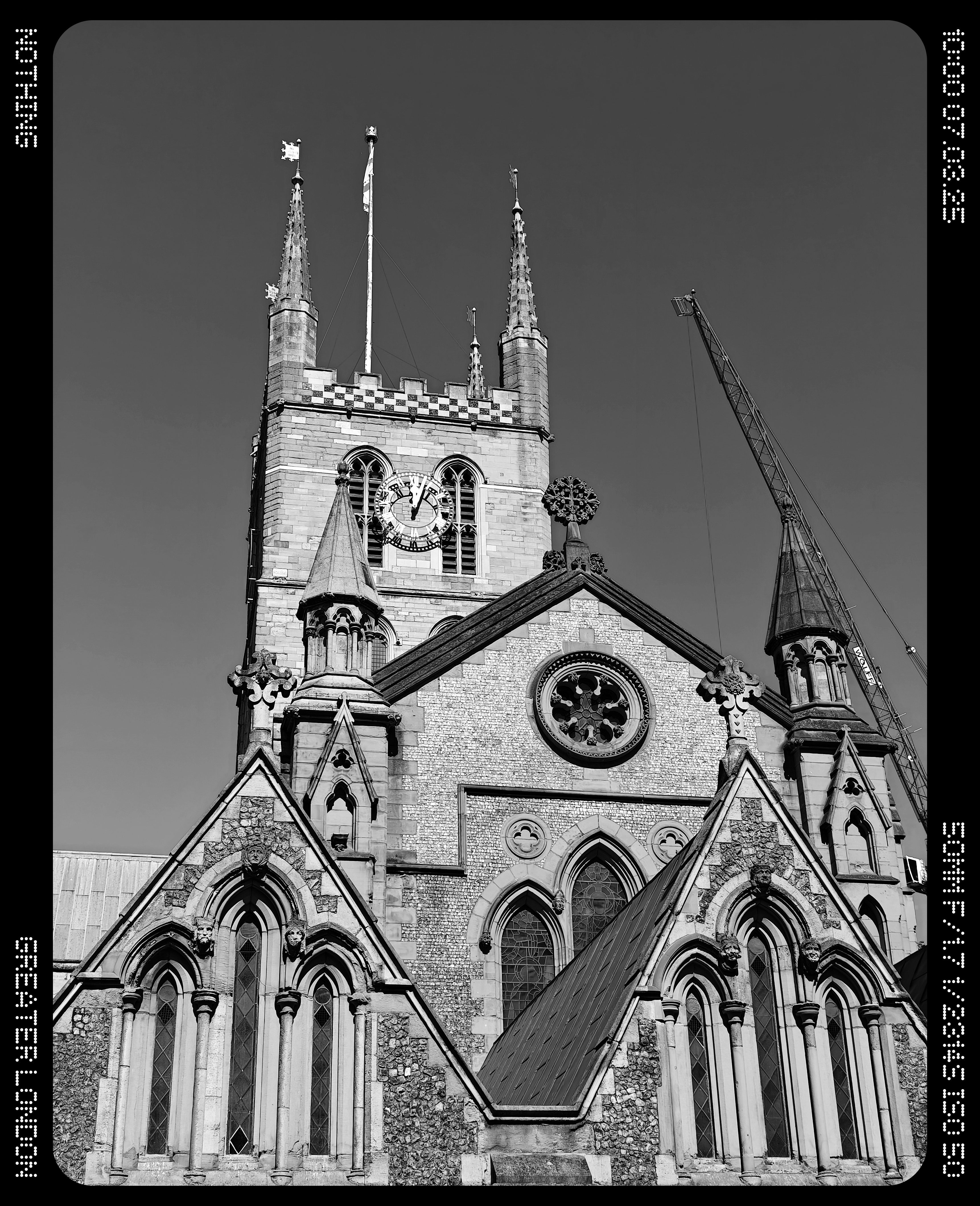


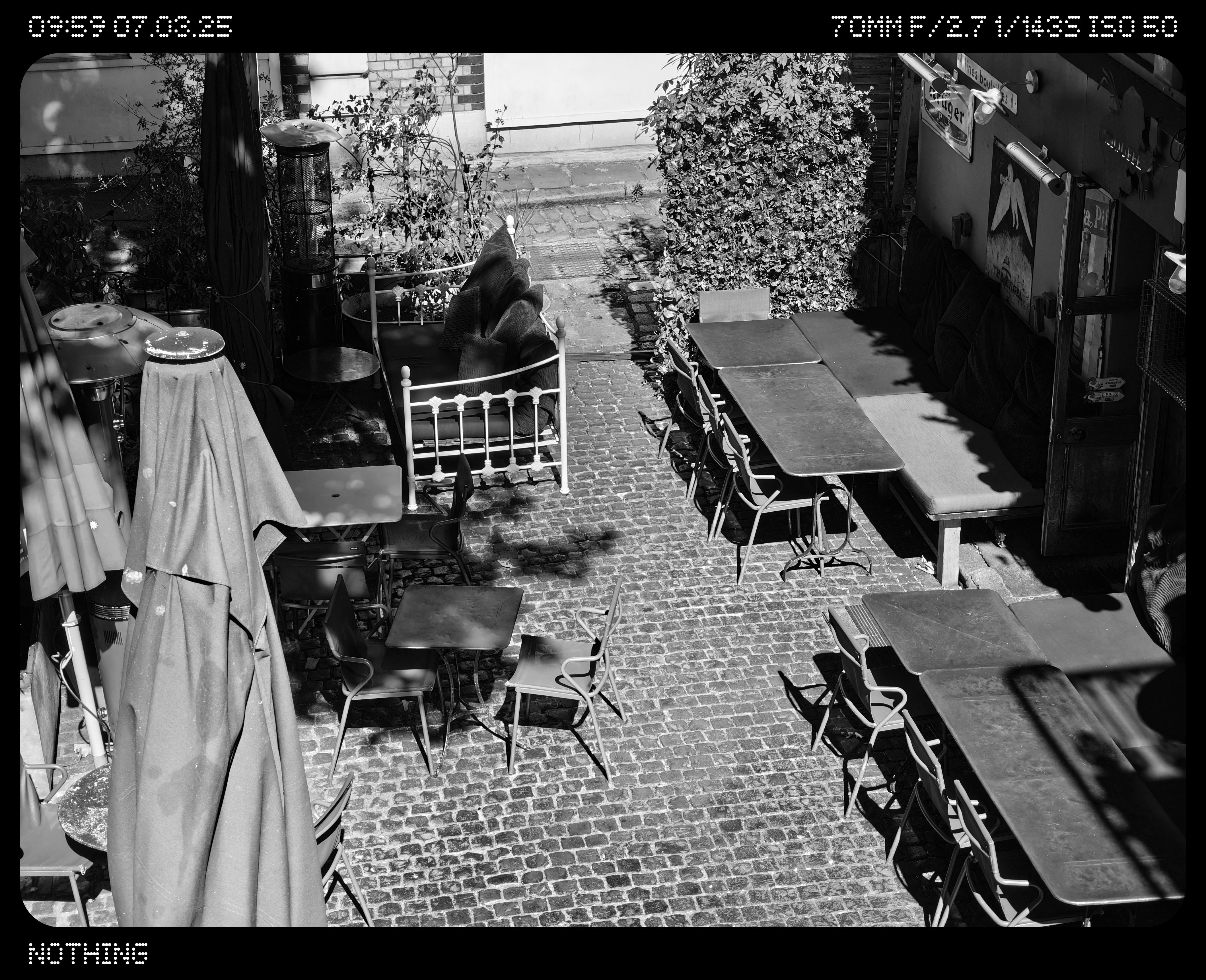
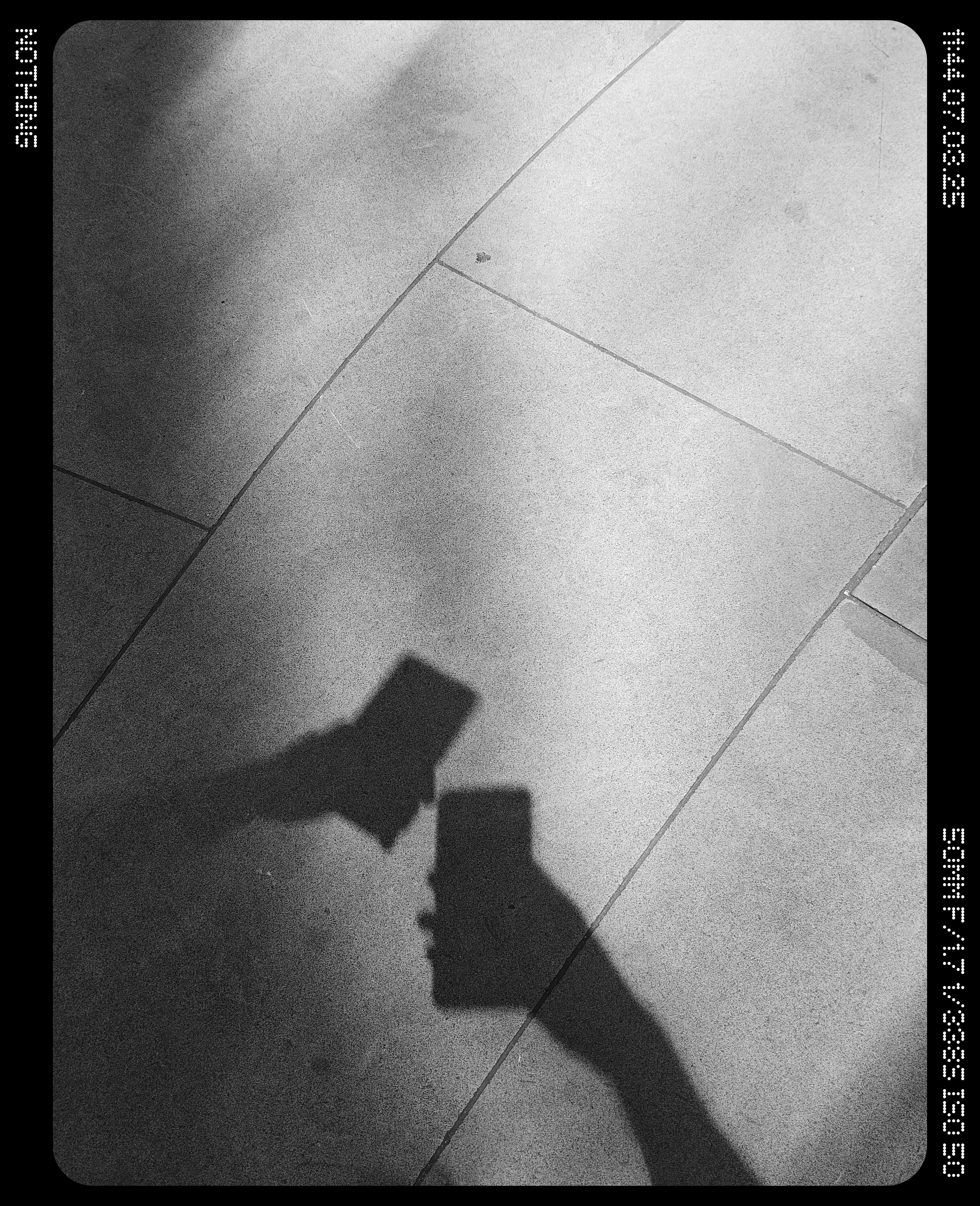
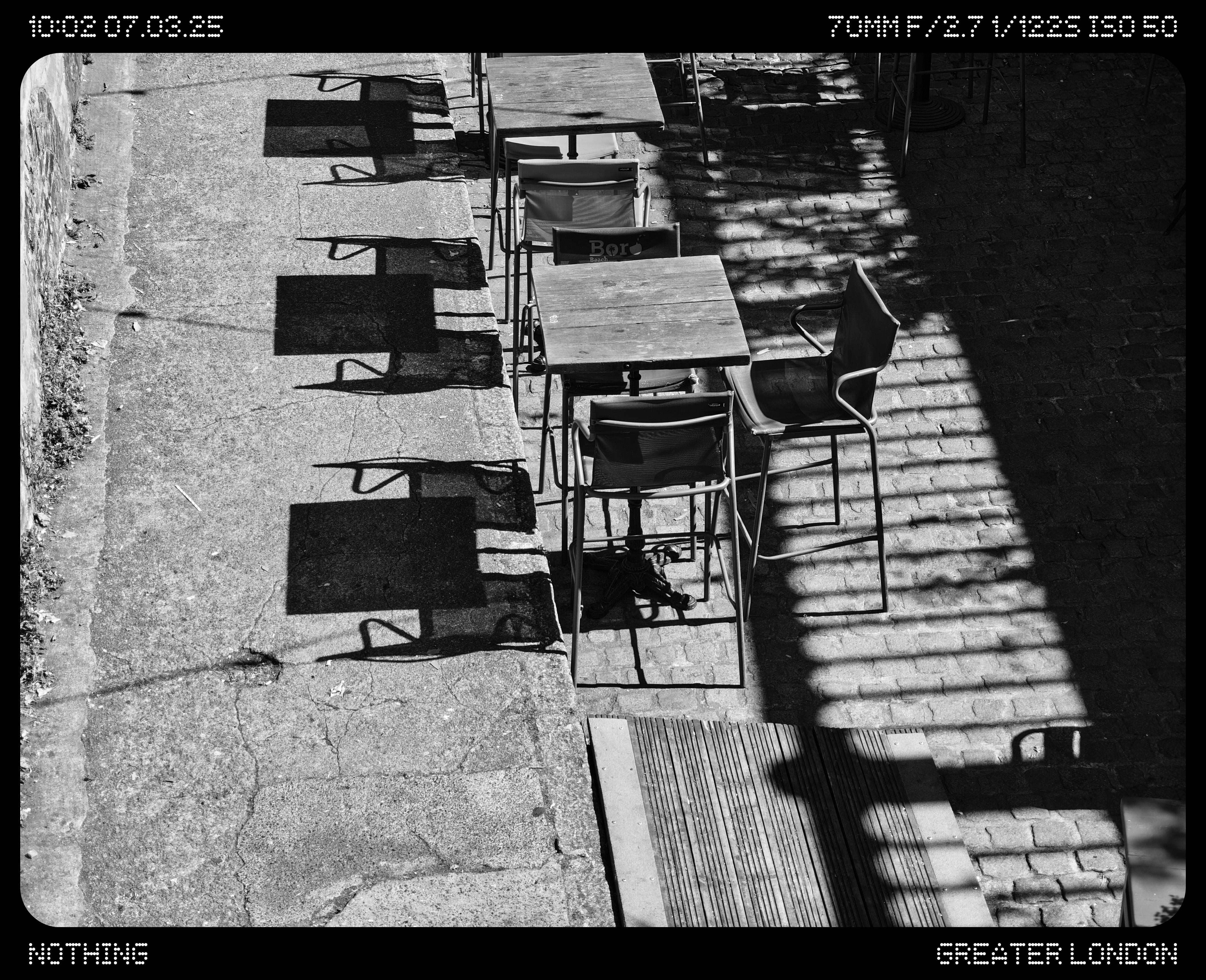
Nothing Phone (3): Phone Performance
The Noting Phone (3) comes equipped with the Qualcomm Snapdragon 8s Gen 4 – not the top flagship processor for this supposedly flagship phone (that would be the Snapdragon 8 Elite), but honestly, I think you’d struggle to notice. The Phone (3) comes in either 12GB or 16GB RAM varieties, and the 16GB version I was testing absolutely breezed through my day-to-day, be it web browsing, streaming Netflix, and of course, taking and editing photos.
| Row 0 - Cell 0 | Nothing Phone (3) | Google Pixel 9 | OnePlus 13 |
GeekBench 6 (Single) | 2152 | 1921 | 2945 |
GeekBench 6 (Multi) | 6798 | 4465 | 8950 |
GeekBench 6 (GPU) | 13514 | 7358 | 17871 |
PCMark (Performance) | 14981 | 14366 | 18855 |
The Phone (3) runs the latest version of NothingOS – Nothing’s Android 15 skin – although Nothing is promising that NothingOS 4, based on Android 16, will be arriving later in the year. NothingOS is one of my favourite versions of Android; it is so close to Google’s original vision for the OS, which means there is very little superfluous bloat. However, everything has been given a lick of Nothing style with Nothing’s serif and dot matrix fonts found throughout, as well as lots of minimal Nothing design widgets.
The 5,150mAh battery isn’t the largest you’ll find in a phone this year, with many phones now sporting 6,000mAh+ capacity, but I found battery performance was stellar, I was easily getting through a day of using the Phone (3) as my daily driver and still returning home at night with around a quarter left in the tank. Although if you do find yourself running low, then the 65W wired charging is good for a quick top-up – although a compatible charger is not included in the box. There is also 15W wireless charging, although no MagSafe-style magnetic alignment.
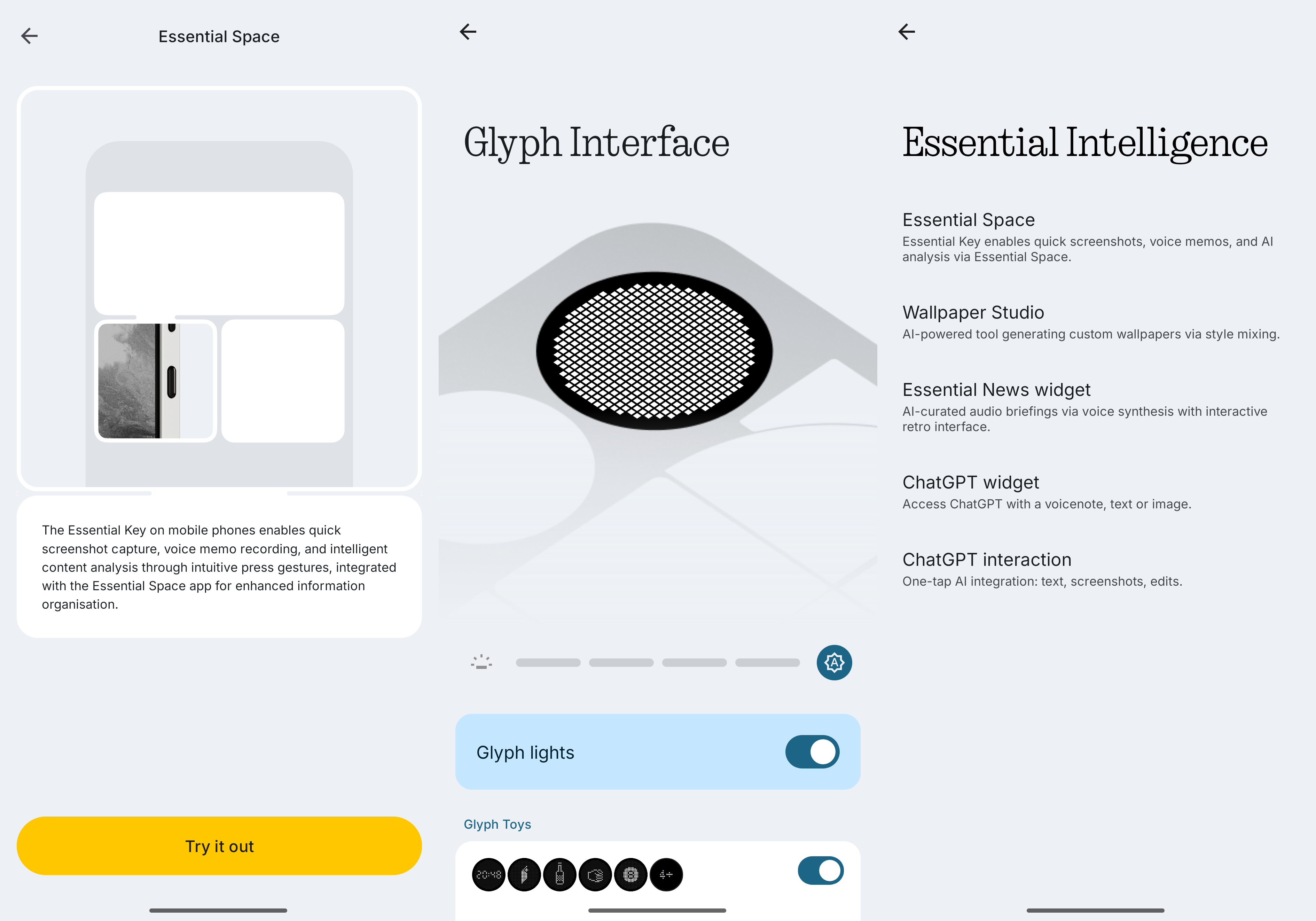
Finally, like most phone brands, AI is front and centre in much of what is new with the Phone (3). The Phone (3) features the Essential Space, which debuted with the (3a) phones earlier in the year, and acts as a digital scrapbook for screenshots and voicenotes, infused with AI to help organise and pull out key information. It's a useful repository, and I do regularly screenshot a lot of things to go back to later – however, it would take some time for me to train myself to use it, as my default action is still to use the default screenshot gesture, and I don't find the current level of AI analysis that informative.
But that’s not the only way to interact with AI on the Phone (3). As well as Gemini, which is embedded into Android in the same way as all other phones, with Google’s voice assistant being the default, and the bottom bar activating circle to search. There is also ChatGPT built in, with a ChatGPT widget available for certain actions, allowing you to use OpenAI’s assistant nearly as easily as Google’s. As a frequent user of both, it's great to have the option, as for certain tasks, ChatGPT is the much better option.
Nothing Phone (3): Verdict
The Nothing Phone (3) proves that the upstart brand can graduate from cult-favorite to bona-fide flagship, with design and performance to rub shoulders with rivals. Day-to-day performance is incredibly solid, while NothingOS keeps Android 15 refreshingly uncluttered, and battery life is standout – I regularly ended the day with charge to spare.
Nothing continues its signature head-turning design, with the transparent chassis now punctuated by the quirky Glyph Matrix. The new Glyph Matrix might upset some hardcore Glyph Lighting fans, but these contextual snippets are much more useful than the patterns of lights from previous models. Although right now, most Glyph Toys are throwaway novelties, I am excited to see what else Nothing can use this new interactivity for.
It is only the Phone (3)'s cameras that let it down; they are solid performers, but have a little more work to do to keep up with the competition. Where the Phone (3) stumbles is consistency – the 50MP main sensor is a reliable workhorse, and the telephoto is solid in the right light – yet color consistency between lenses is too frequently off, and the ultrawide softens quickly if you crop.
But at $799, taking on the likes of the Samsung Galaxy S25, Pixel 9 and OnePlus 13, the Phone (3) is a dependable challenger for those who want an affordable flagship with a little more style.
Features ★★★★☆ | Triple 50MP camera system, good screen, speedy processing, and long battery life meet the billing of Nothing's first ‘flagship’. |
Design ★★★★★ | Unique design stands out from the crowd – although the design won’t be for everyone. The Glyph Matrix is more useful than the Glyph lighting, but some toys are a little gimmicky. |
Performance ★★★★☆ | Cameras are solid performers but struggle with inconsistency and can’t keep up with rivals for overall reliability and quality. But phone performance is great, and NothingOS is a delight. |
Value ★★★★☆ | Going toe-to-toe on price with the likes of the Pixel 9 and iPhone 16, the Phone (3) offers a great value alternative for design-conscious buyers, although can't take the edge over either rivals camera system. |
Alternatives
Google Pixel 9: unlike the Phone (3), this pixel misses out on a telephoto lens, although Google's super-res zoom does a fairly decent job of making up for it. But with the main and ultrawide cameras, the Pixel is just more consistent.
Read our full Google Pixel 9 review
Nothing Phone (3a) Pro: if you want signature Nothing design in a cheaper package, then the 3(a) Pro offers the same great style, NothingOS, and a slightly less advanced triple camera system – but more a much lower price.
Read our full Nothing Phone (3a) Pro review

Gareth is a photographer based in London, working as a freelance photographer and videographer for the past several years, having the privilege to shoot for some household names. With work focusing on fashion, portrait and lifestyle content creation, he has developed a range of skills covering everything from editorial shoots to social media videos. Outside of work, he has a personal passion for travel and nature photography, with a devotion to sustainability and environmental causes.
You must confirm your public display name before commenting
Please logout and then login again, you will then be prompted to enter your display name.
